Just a couple blocks from our hotel, the tour begins...
...these tomb hills are around 1500-1800 years old, the trees maybe 80-120 years old, quite the contrast in time.
...these tomb hills are around 1500-1800 years old, the trees maybe 80-120 years old, quite the contrast in time.
(click the below photo to be able to read the English translation part)
We moved on to a park that contains a great many concentrated and conserved (protected) tomb hills.
Scenes along the way until the next sight of interest...
"Woljeonggyo Bridge was built during the Unified Silla period (AD 676-935), but was burnt down during the Joseon dynasty. Through historical research, the bridge was rebuilt in April 2018 to become the largest wooden bridge in Korea. According to Samguk Sagi (History of the Three Kingdoms), the bridge was built during the 19th year of King Gyeongdeok’s reign (AD 760), connecting Wolseong and Namsan together. The historical research to rebuild the bridge lasted from November 26, 1984 to September 8, 1986, determining that the bridge was made with wood. The bridge was reconstructed from 2008 to 2018."
We had a general idea of what we could see in this town. But an excellent tourist information lady, who spoke English well at the train station where we arrived from Busan, showed us what to concentrate on and how to go about it (the marks on the map are her's).
We had a general idea of what we could see in this town. But an excellent tourist information lady, who spoke English well at the train station where we arrived from Busan, showed us what to concentrate on and how to go about it (the marks on the map are her's).
More scenes along the way to the next spot...
The above sign is at the entrance to a museum -- okay, we will -- pokey poisonous creatures aren't our bag.
"The Gyeongju National Museum's holdings are largely devoted to relics of the Silla kingdom, of which Gyeongju was the capital. The museum is located immediately adjacent to the royal tomb complex and was first founded in 1945 as the Gyeongju Branch of National Museum of Korea. The main building of the museum was built in 1968. The museum was upgraded as "Gyeongju National Museum" in 1975 and has been under expansion since then."
"The Gyeongju National Museum's holdings are largely devoted to relics of the Silla kingdom, of which Gyeongju was the capital. The museum is located immediately adjacent to the royal tomb complex and was first founded in 1945 as the Gyeongju Branch of National Museum of Korea. The main building of the museum was built in 1968. The museum was upgraded as "Gyeongju National Museum" in 1975 and has been under expansion since then."
Much of these objects come directly from unearthed tombs, either by accident or purposely. We saw lots of iron, bronze, gold, bone, stone, ceramic and even tree bark works of arts and crafts. We took twice these number pictures shown here, and there were even more treasures for which we didn't take photos.
Armor for the horses and the humans...
At first this may look like holes in the ground, but it's a photo of the tomb hill park we strolled through - there're other mounds scattered around outside the park as well.
To the right below are items taken directly from where the body was laid - we didn't see any mummies or bones - without further researching this, we wonder if Korean culture doesn't allow for this type of display, or if the body was possibly even cremated upon death.
Apparently a "face" end cap from a roof edge is very special, they didn't explain this, just said in a sense - "ooh, look at this, a face!" - very possibly more is provided in the Korean words alongside it. We were happy to have the amount of English translation that is provided.
The buildings are very impressive, not some modern architectural box monstrosities.
The adornments of Queen Mara, Lordess of Westchester County.
Now on the Star Trek Enterprise, "Energize!"
On the way back to our lodging, we spotted a large domed structure and wondered if it might be covering a dome dig site - sure enough...
From 1973 onward, the dig began...
Jjoksaem Excavation Site
(this description is from a few years back)
"If you want to learn how the ancient tomb was excavated, you will find answers from the Jjoksaem Excavation Site in Jjoksaem District, east of the Daereungwon Tomb Complex. Jjoksaem Tomb No. 44, which is currently being excavated, is covered with a dome with catwalk access to show the archaeological excavation process.
Archeologists are gradually uncovering (it was well excavated by our arrival) the construction of tumulus burying the deceased, who is enclosed in a wooden chamber, as well as stacked stones that are covered with soil. The earth and stones are being removed at present. Once the archeologists reach the wooden chamber to find the deceased and the burial goods, it will be revealed whether Jjoksaem Tomb No. 44 is the resting place of a known ruler of Silla, an unknown personage of royal blood, or a noble. We can’t wait for the moment when this question is answered. Museum guides are always available at the Jjoksaem Excavation site to help visitors."
(this description is from a few years back)
"If you want to learn how the ancient tomb was excavated, you will find answers from the Jjoksaem Excavation Site in Jjoksaem District, east of the Daereungwon Tomb Complex. Jjoksaem Tomb No. 44, which is currently being excavated, is covered with a dome with catwalk access to show the archaeological excavation process.
Archeologists are gradually uncovering (it was well excavated by our arrival) the construction of tumulus burying the deceased, who is enclosed in a wooden chamber, as well as stacked stones that are covered with soil. The earth and stones are being removed at present. Once the archeologists reach the wooden chamber to find the deceased and the burial goods, it will be revealed whether Jjoksaem Tomb No. 44 is the resting place of a known ruler of Silla, an unknown personage of royal blood, or a noble. We can’t wait for the moment when this question is answered. Museum guides are always available at the Jjoksaem Excavation site to help visitors."
These are replicas of gold relics found within the tomb (a crown and a pair of shoes)...
In the rest of the afternoon, after hanging out in our lodging until evening, we headed out to see the recommended viewing of various sights around town that are purposely illuminated for night time sightseeing.
These hills are defensive ridges placed to aid in protecting the royal palace complexes (long since absent).
Winding down for the evening, we check out our "neighborhood" spots...
The lighting at night seems to animate the big trees on the tomb hill - like they are running up and down the hill as if children.

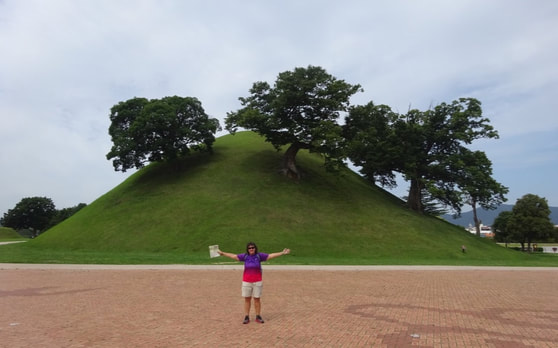
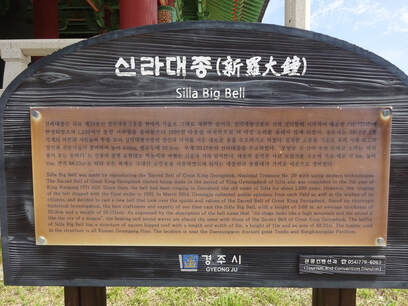

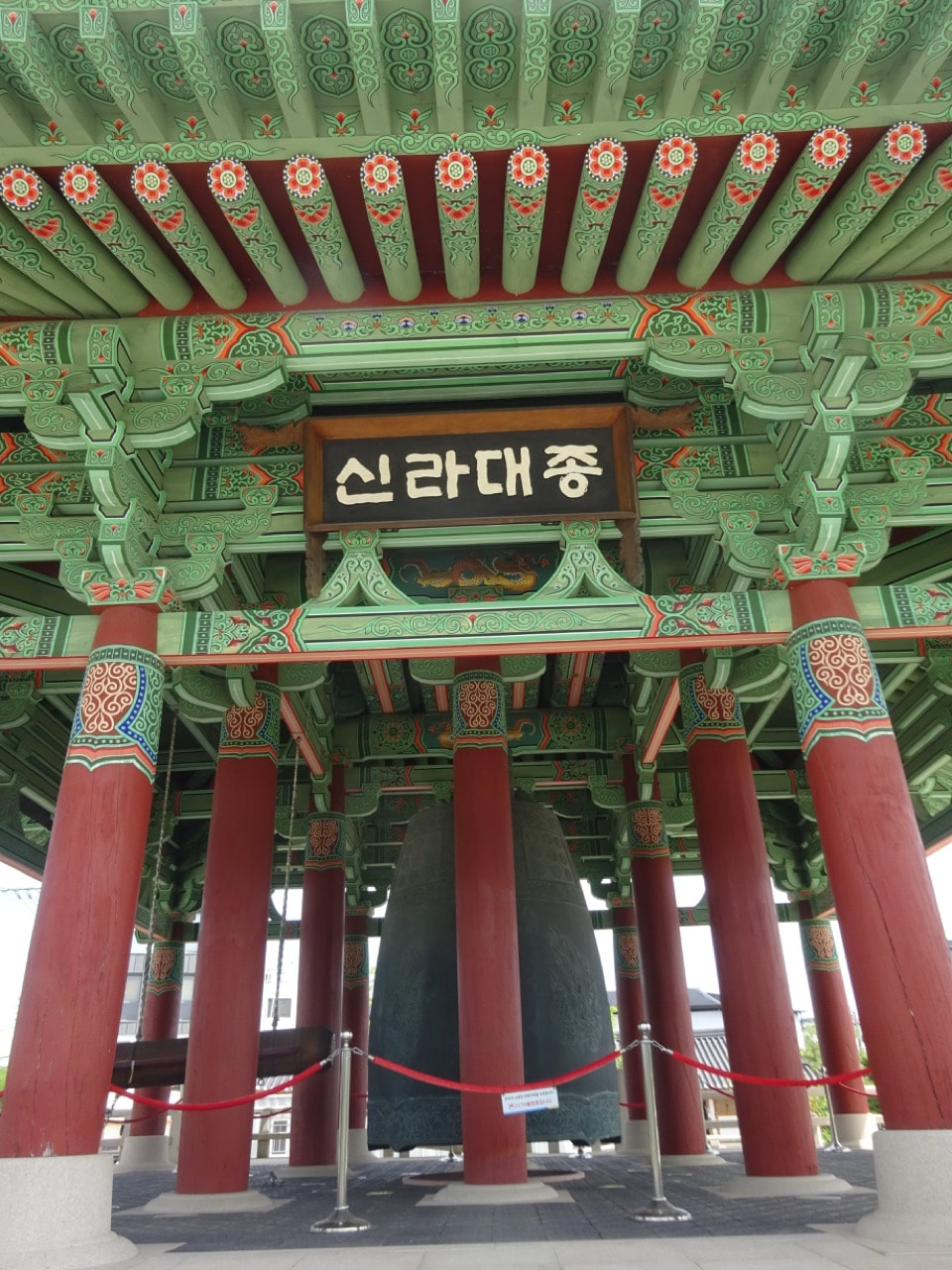
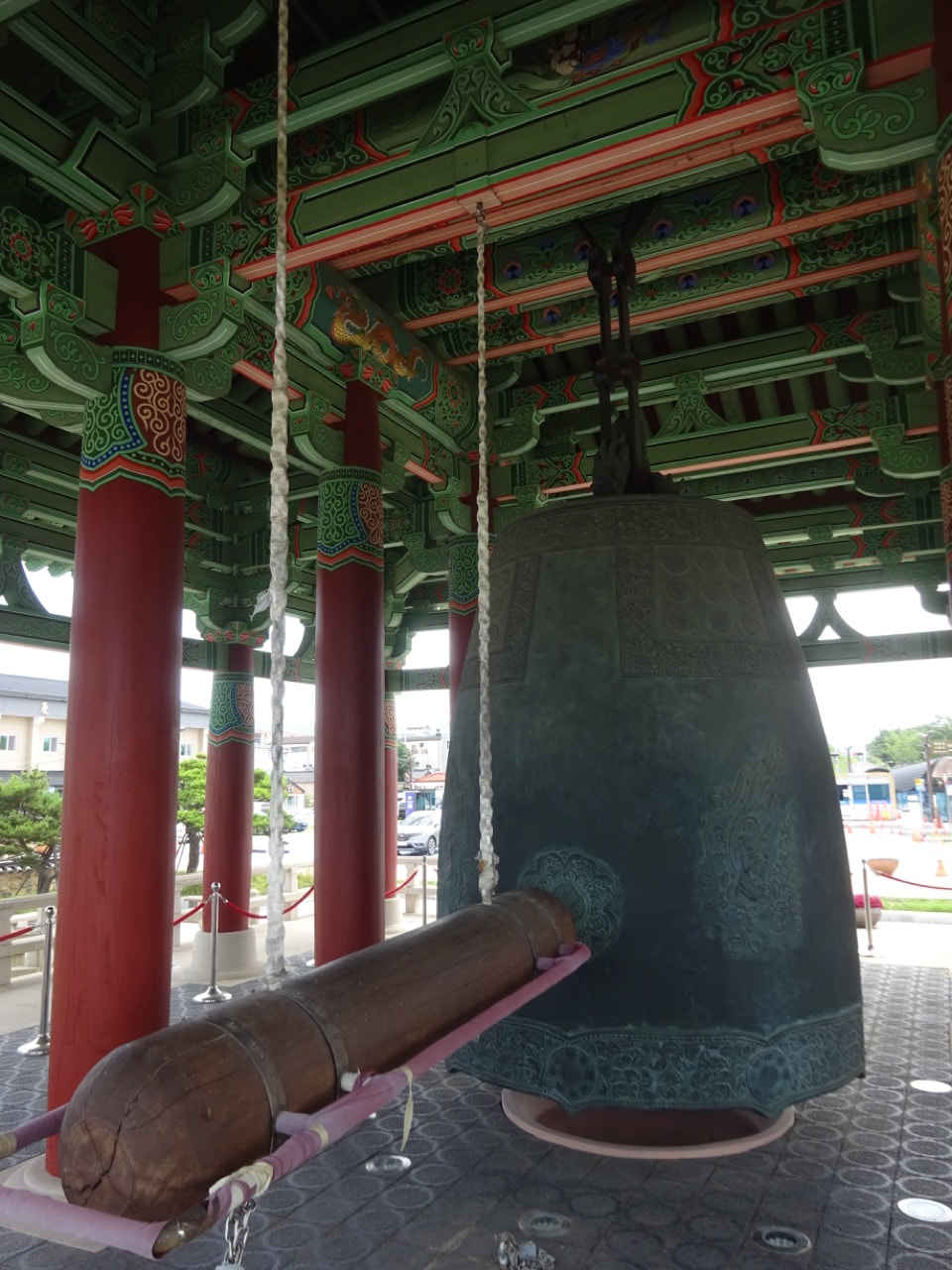
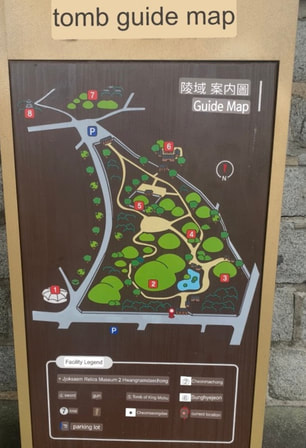
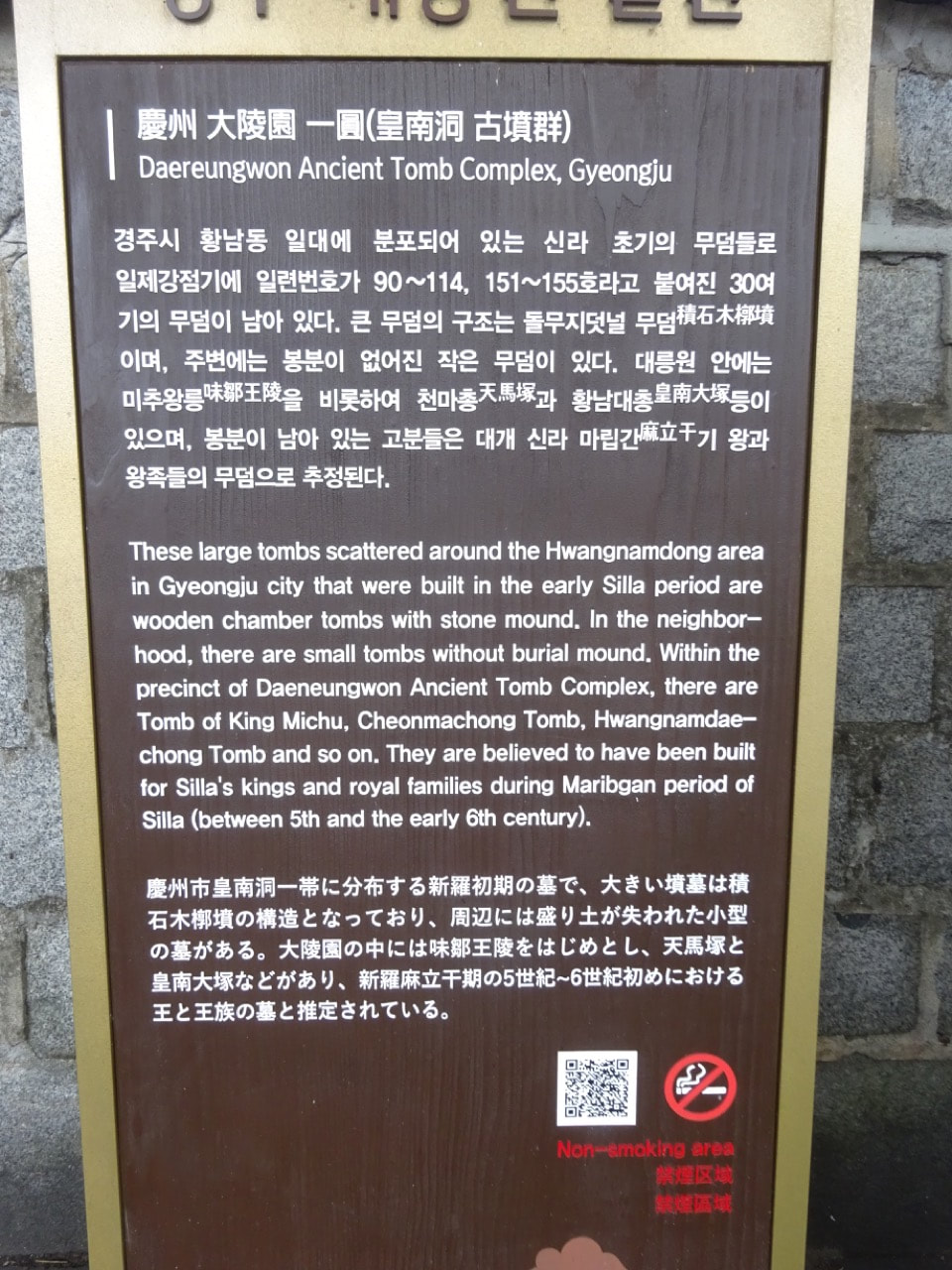
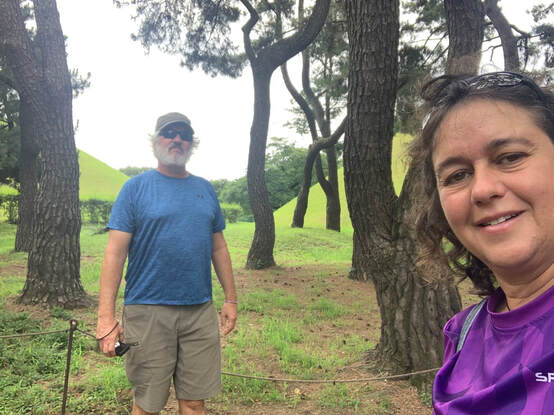
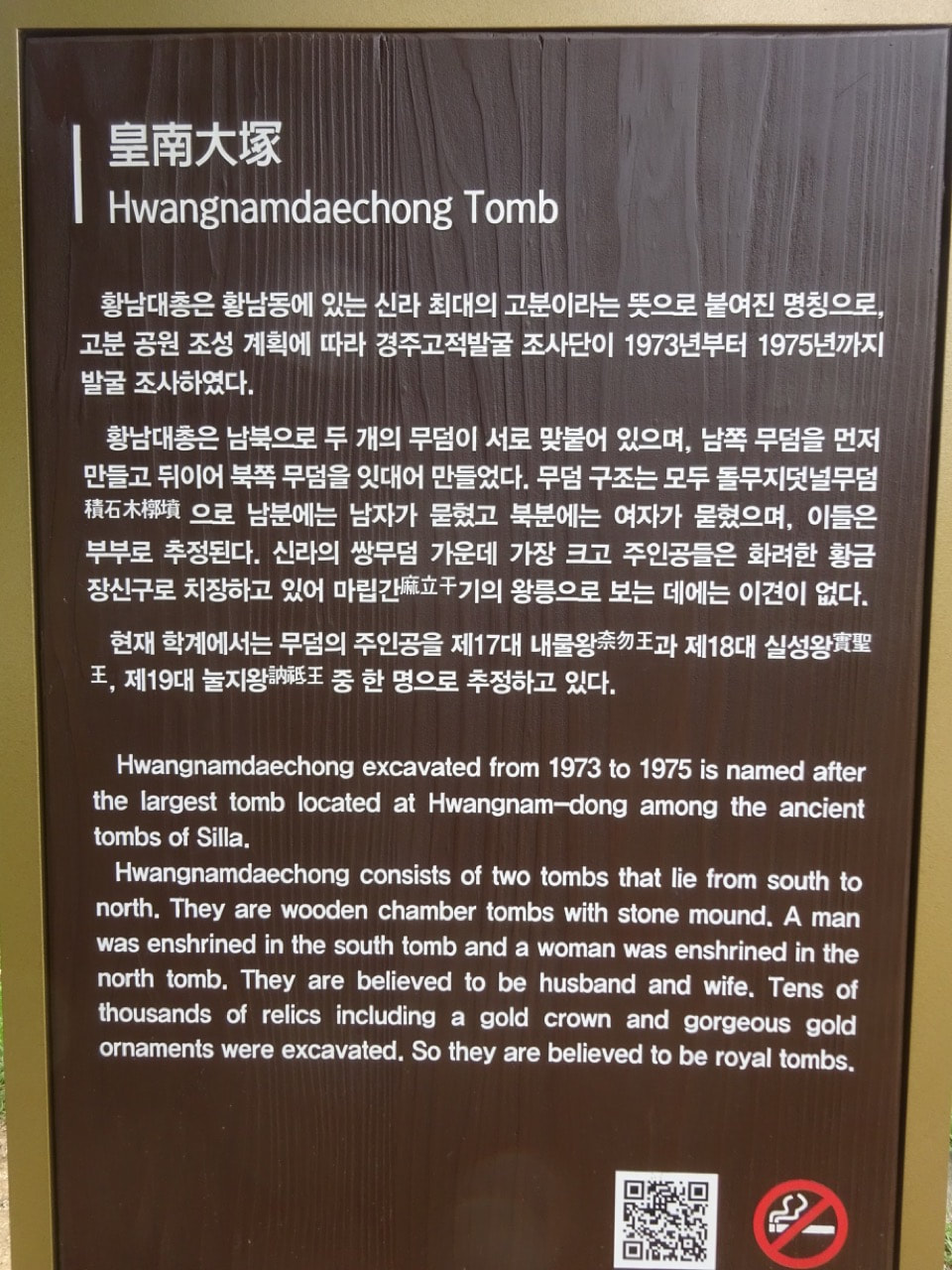
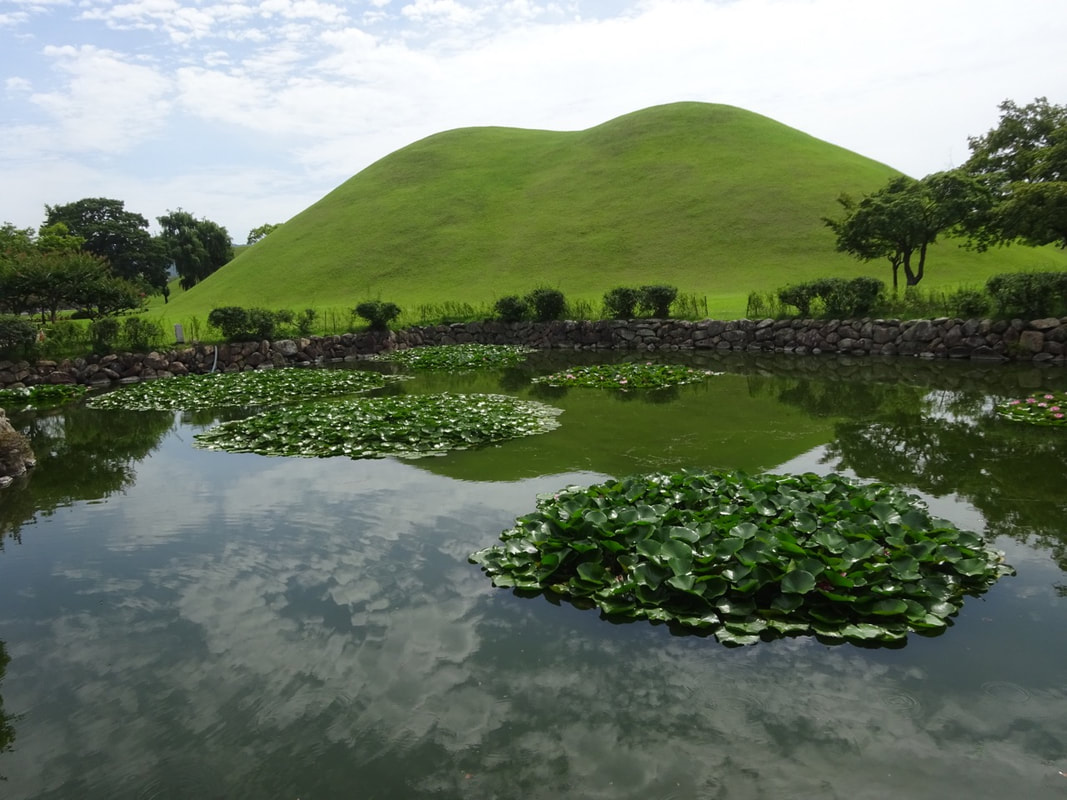
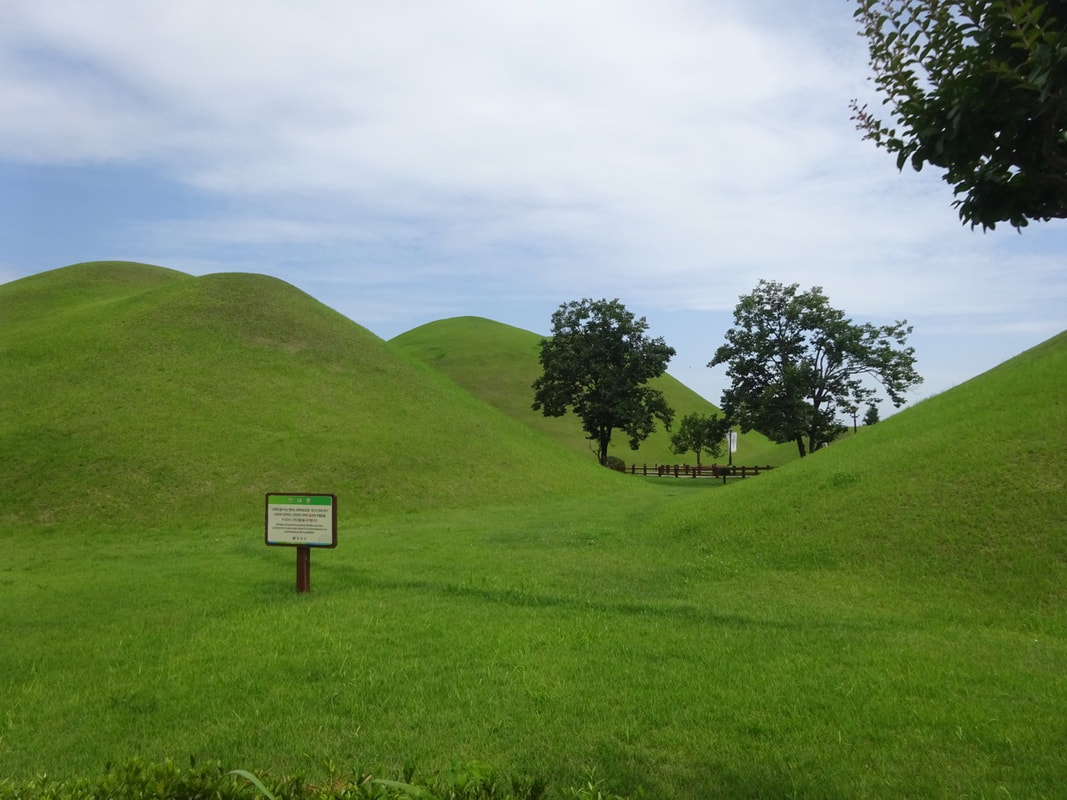
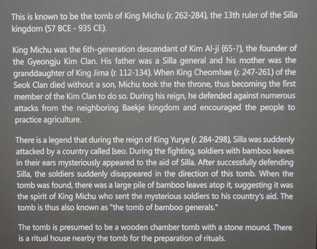
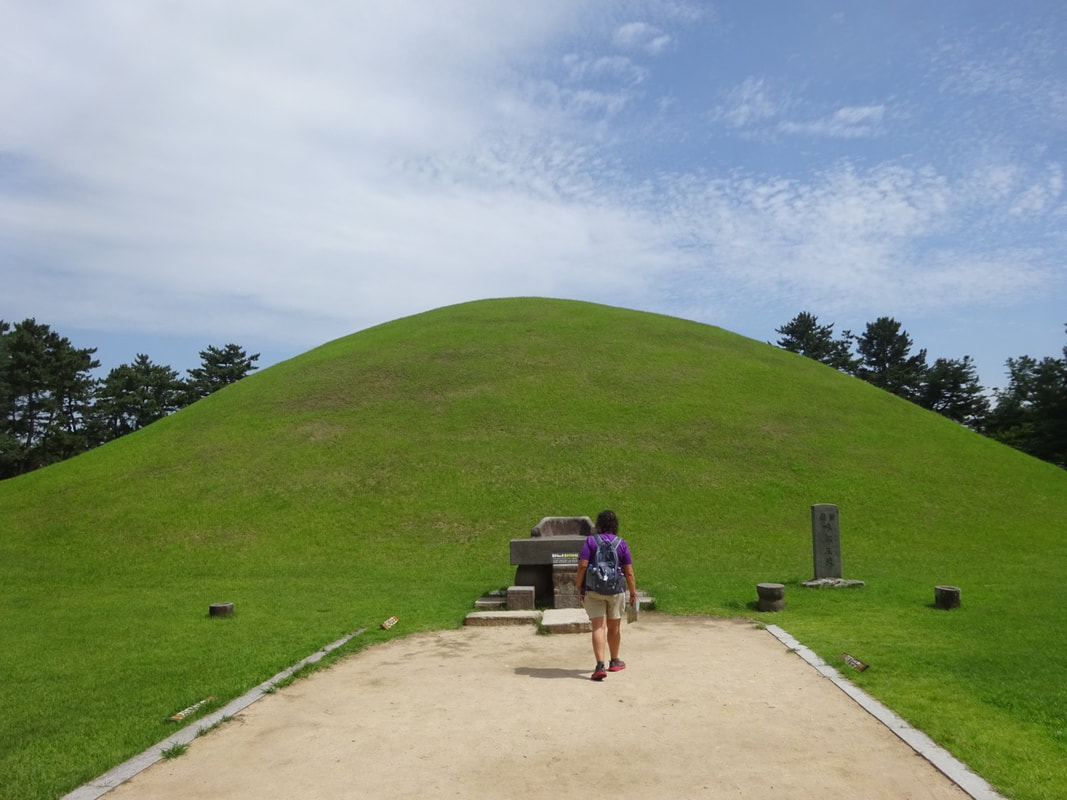


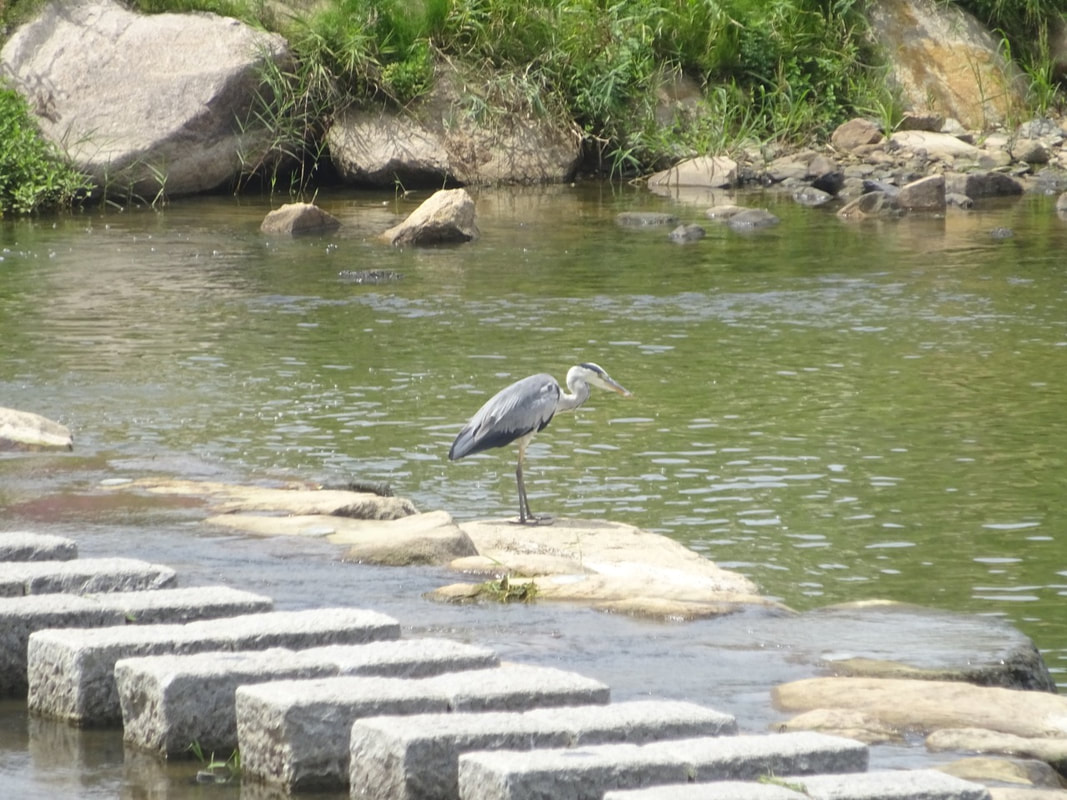
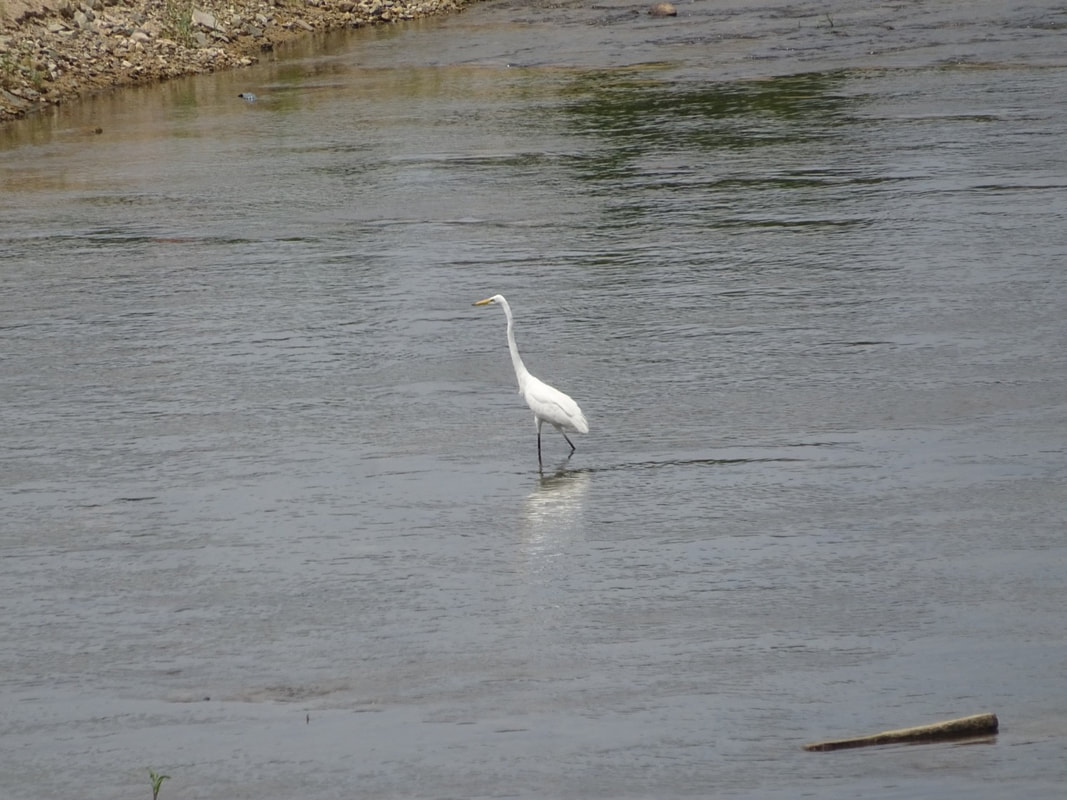

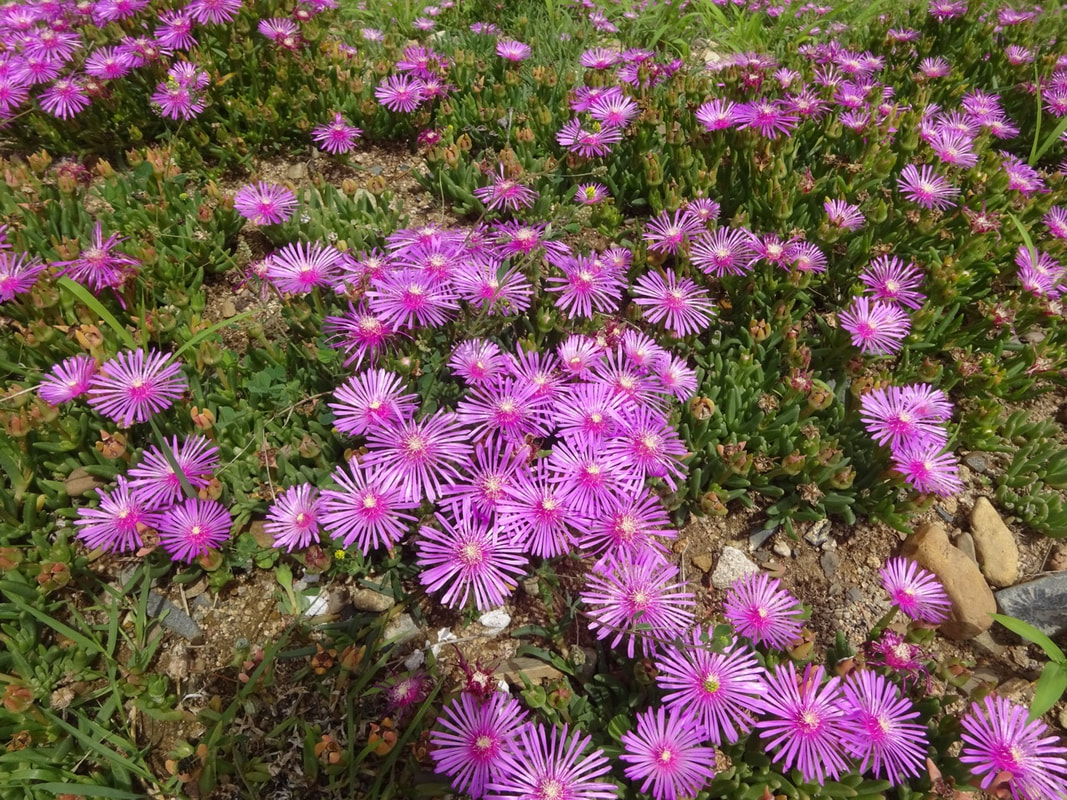
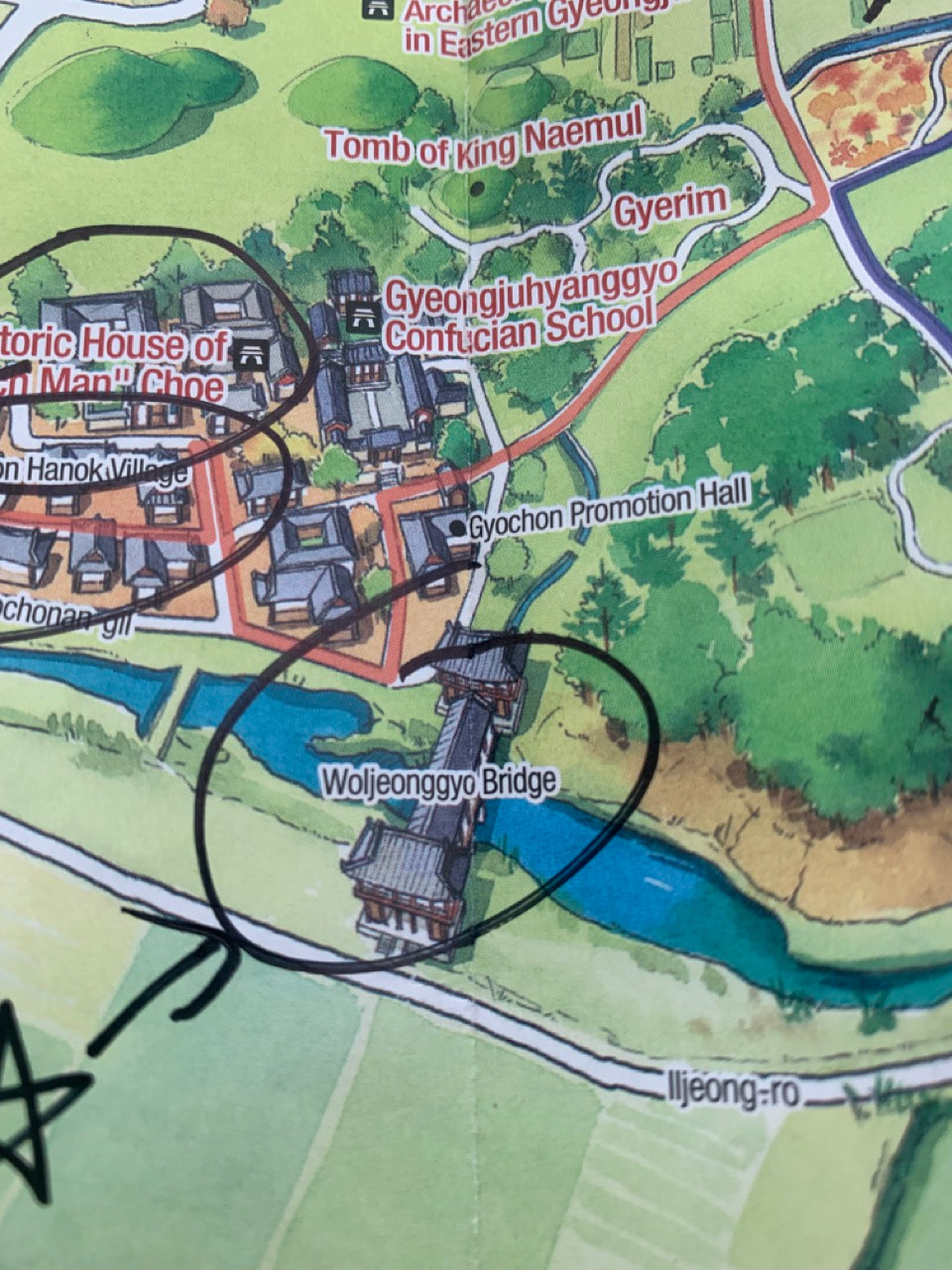
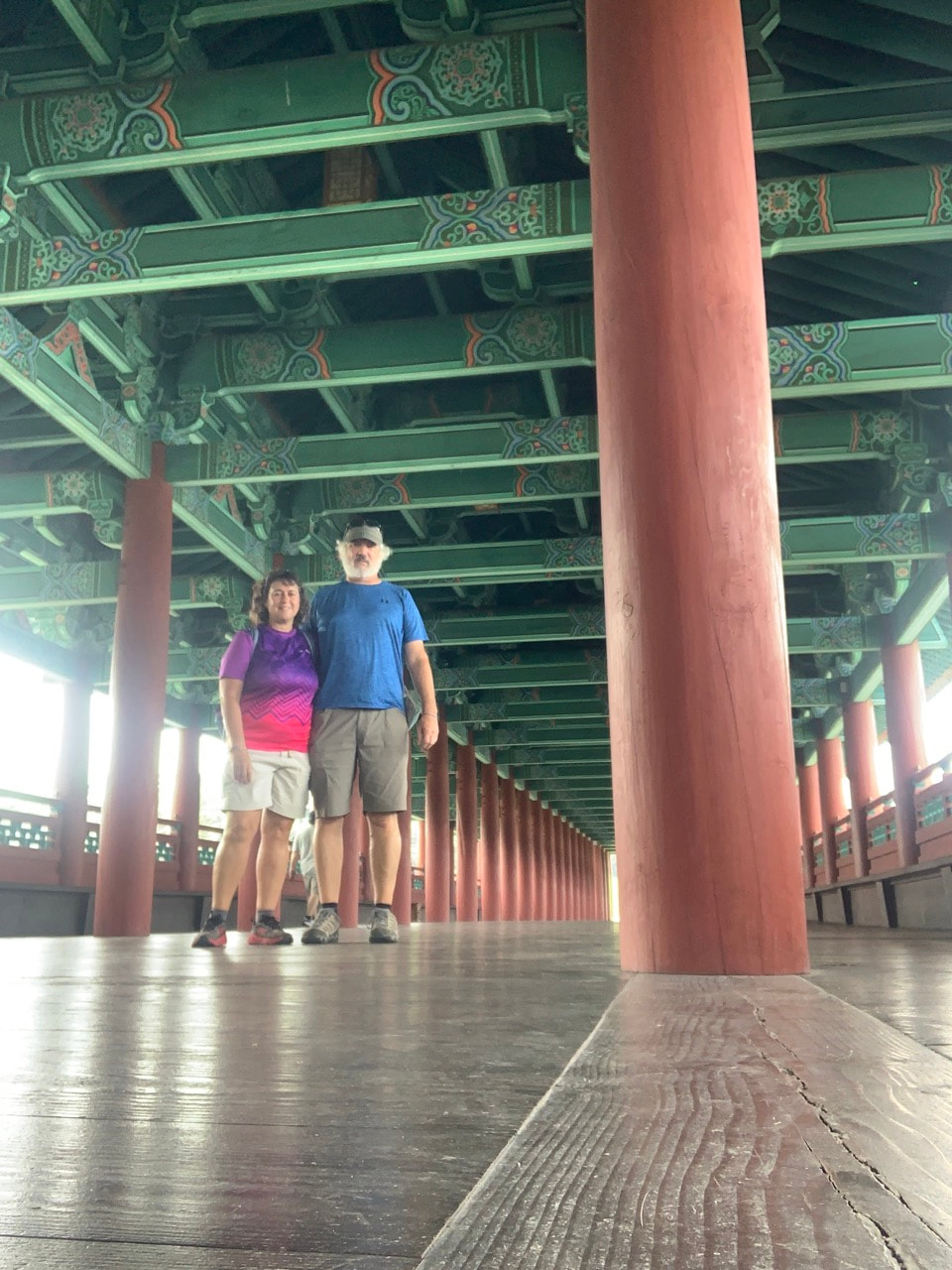
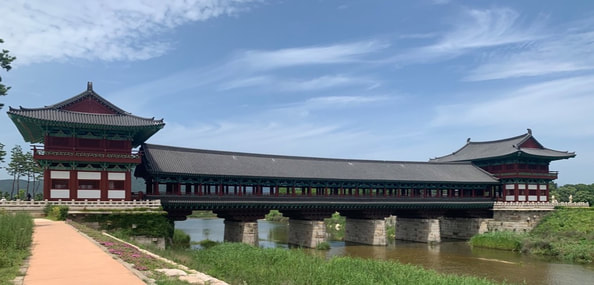
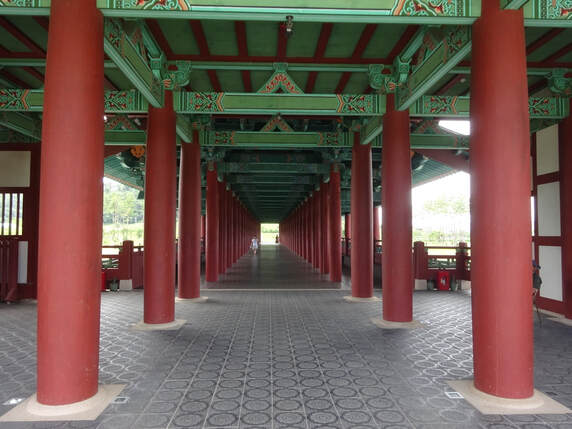
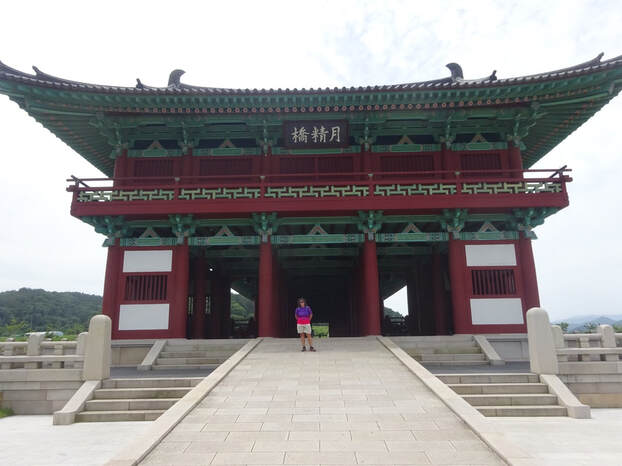
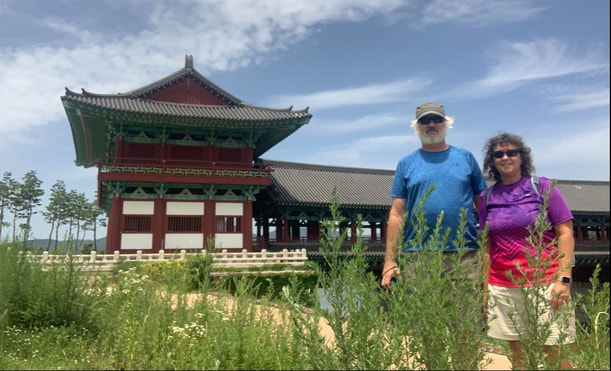


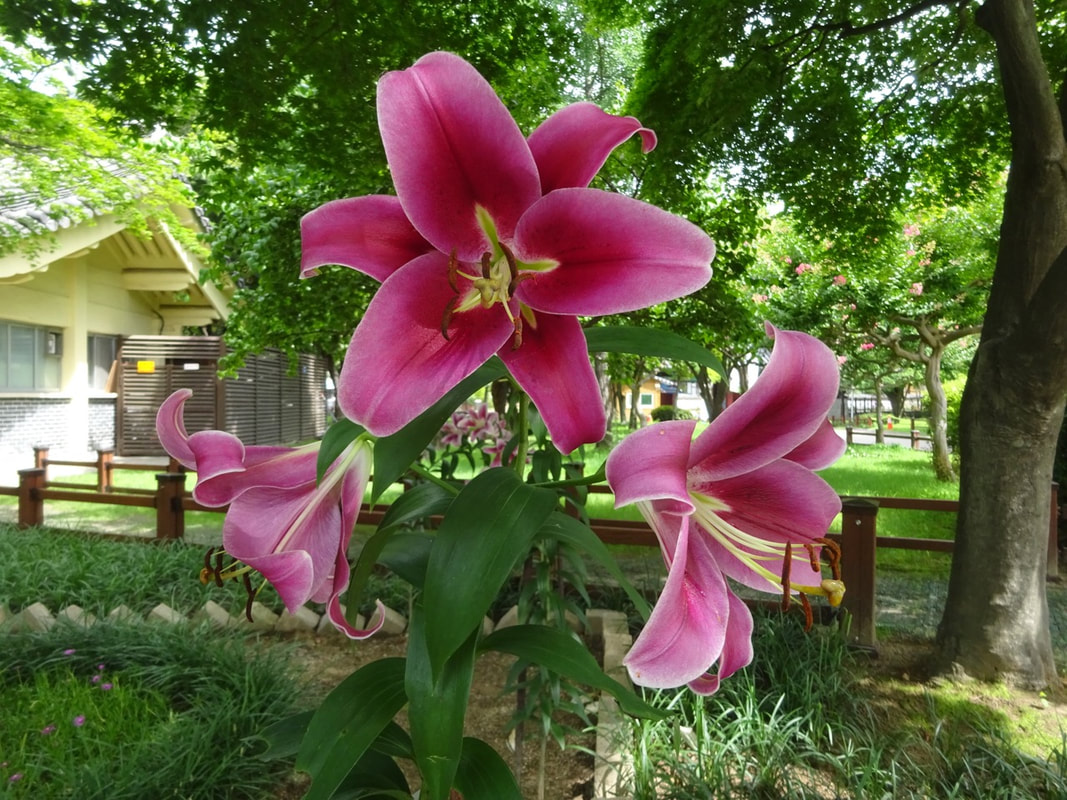
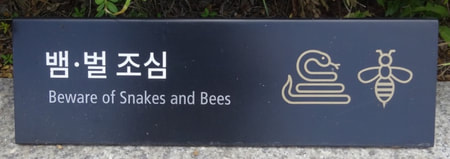
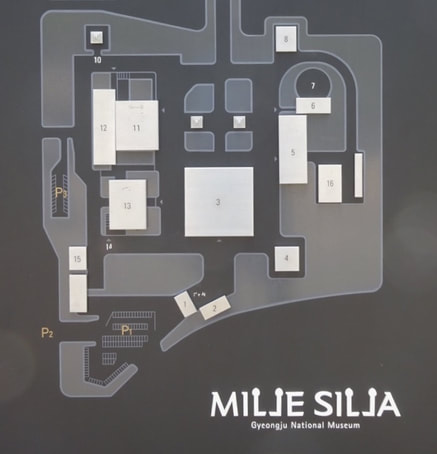
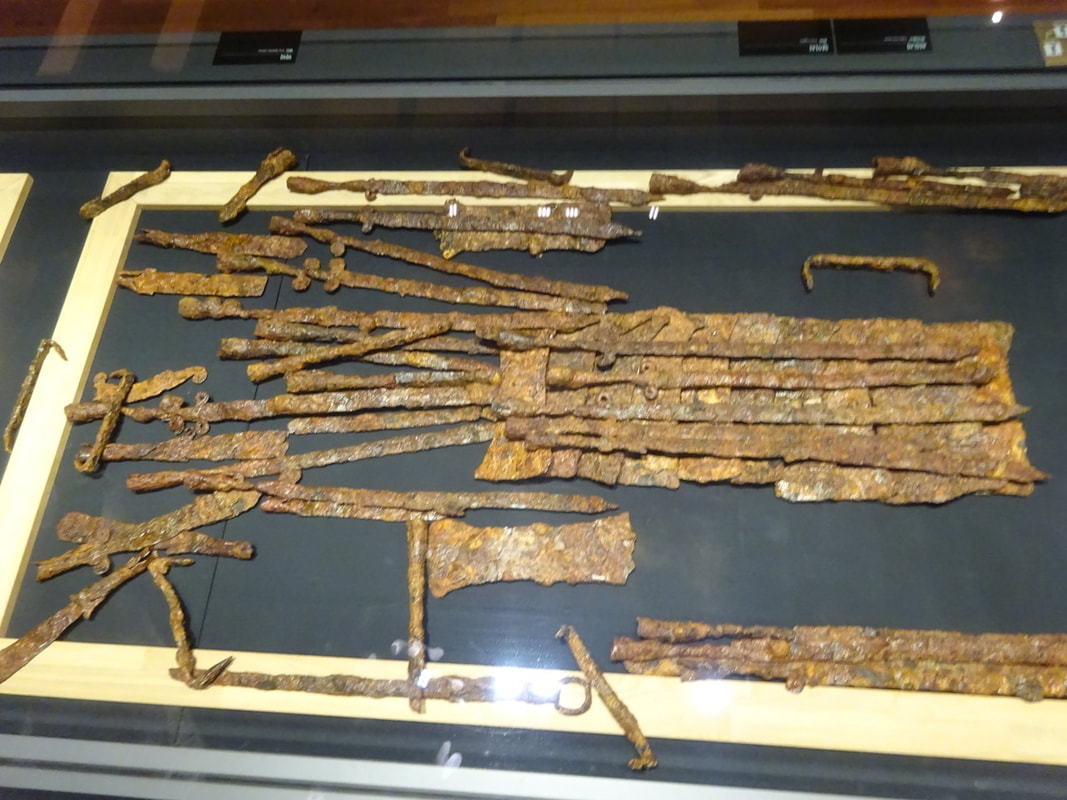
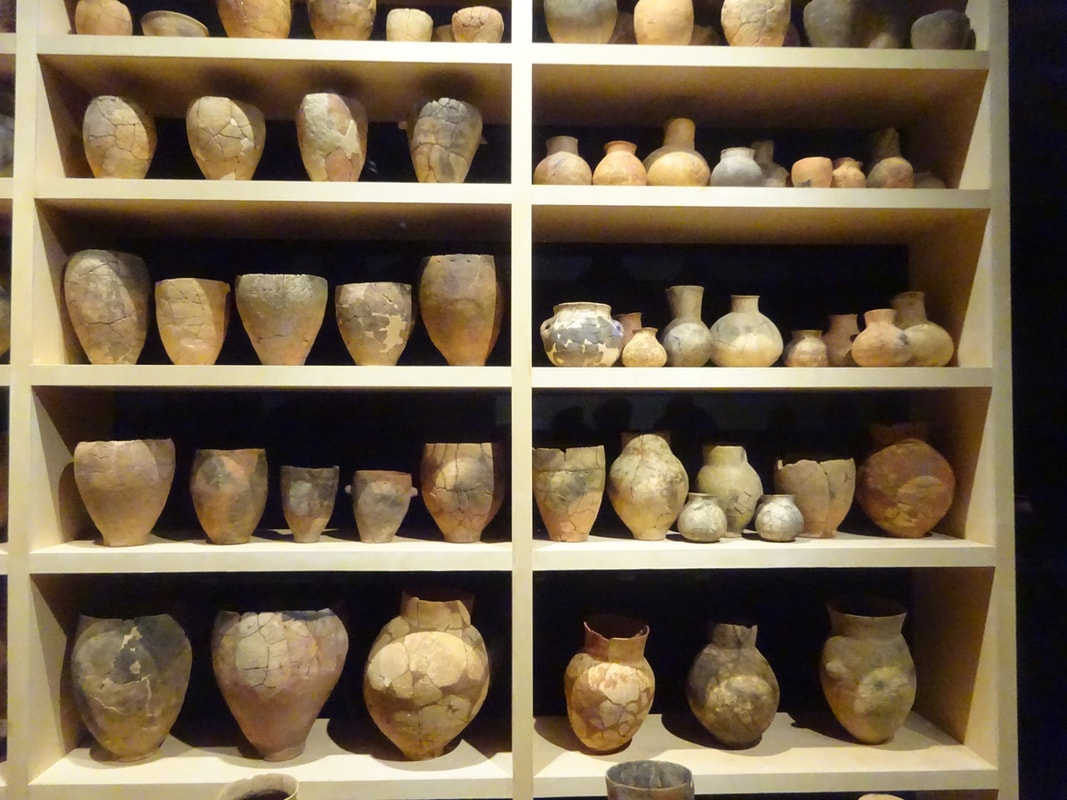
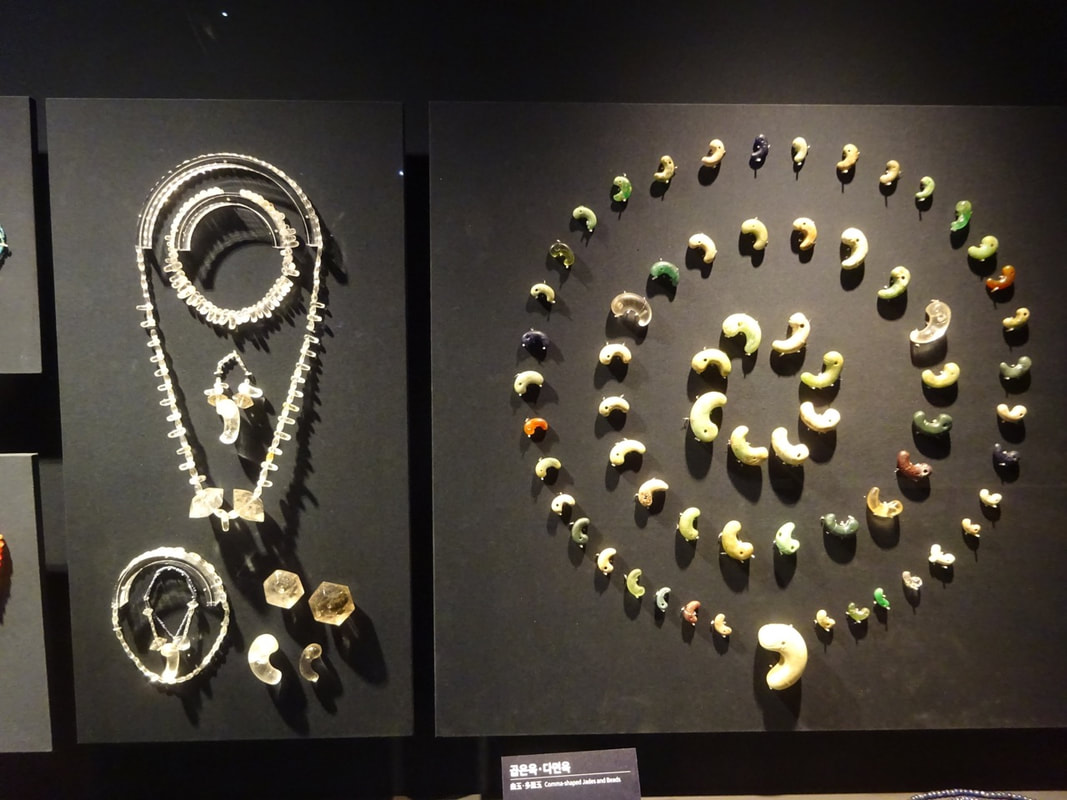
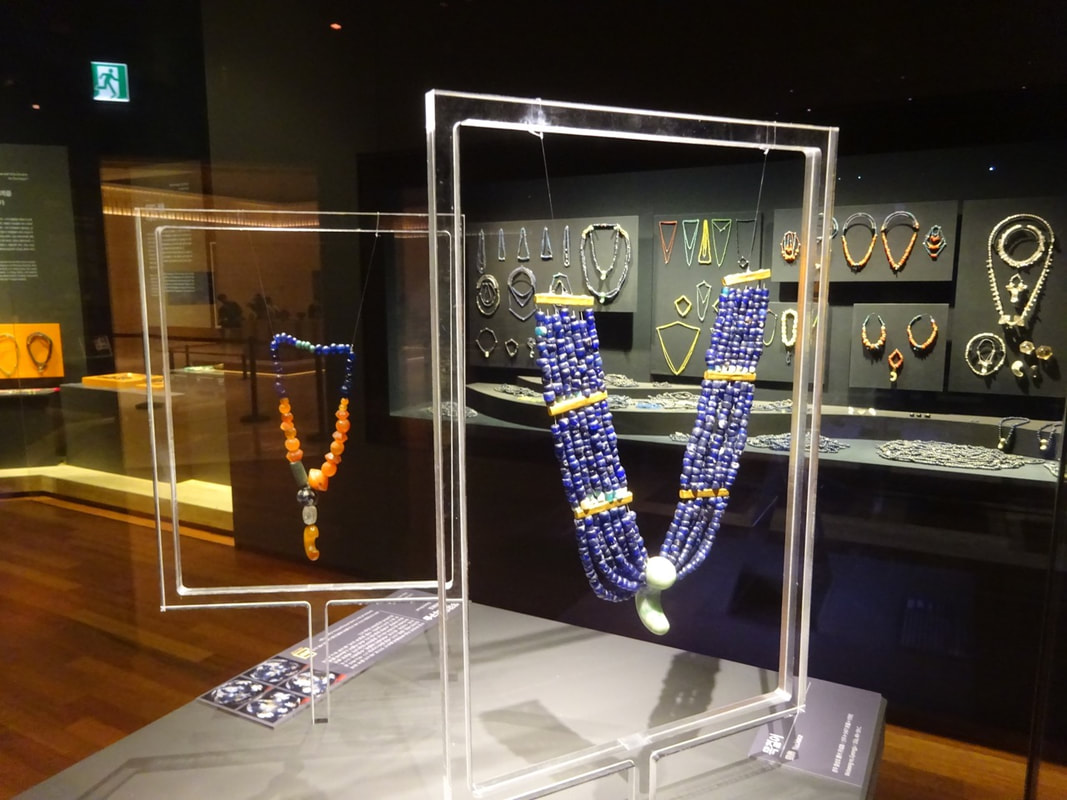
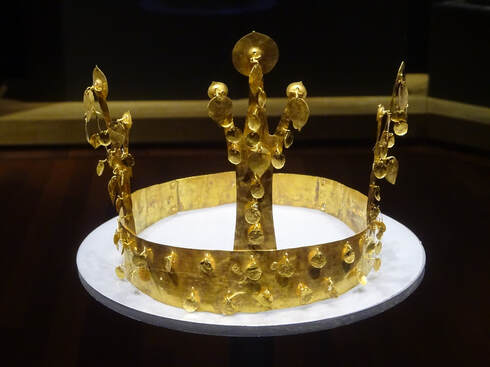

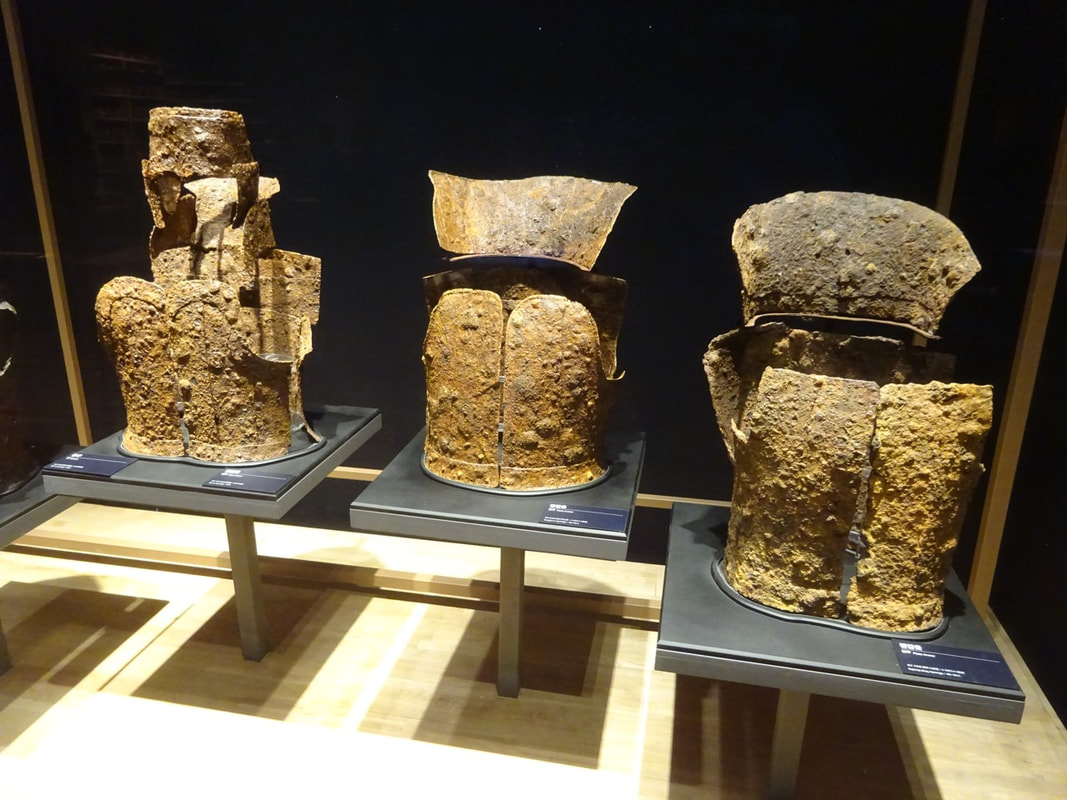
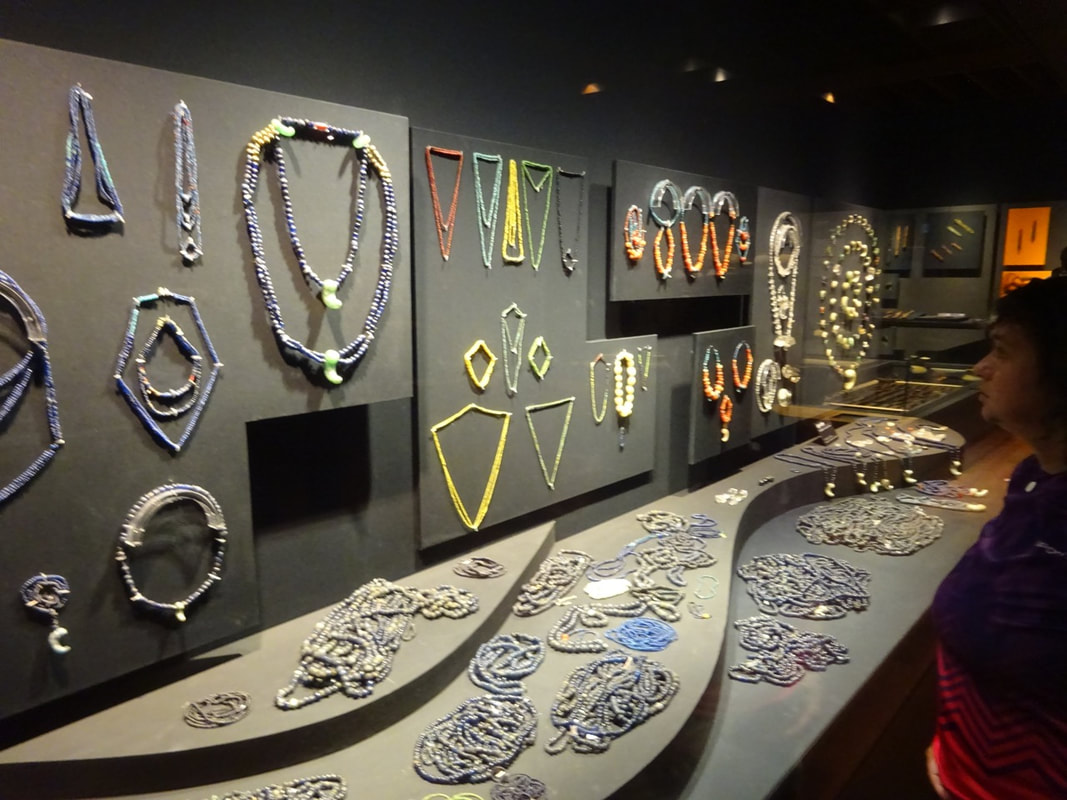
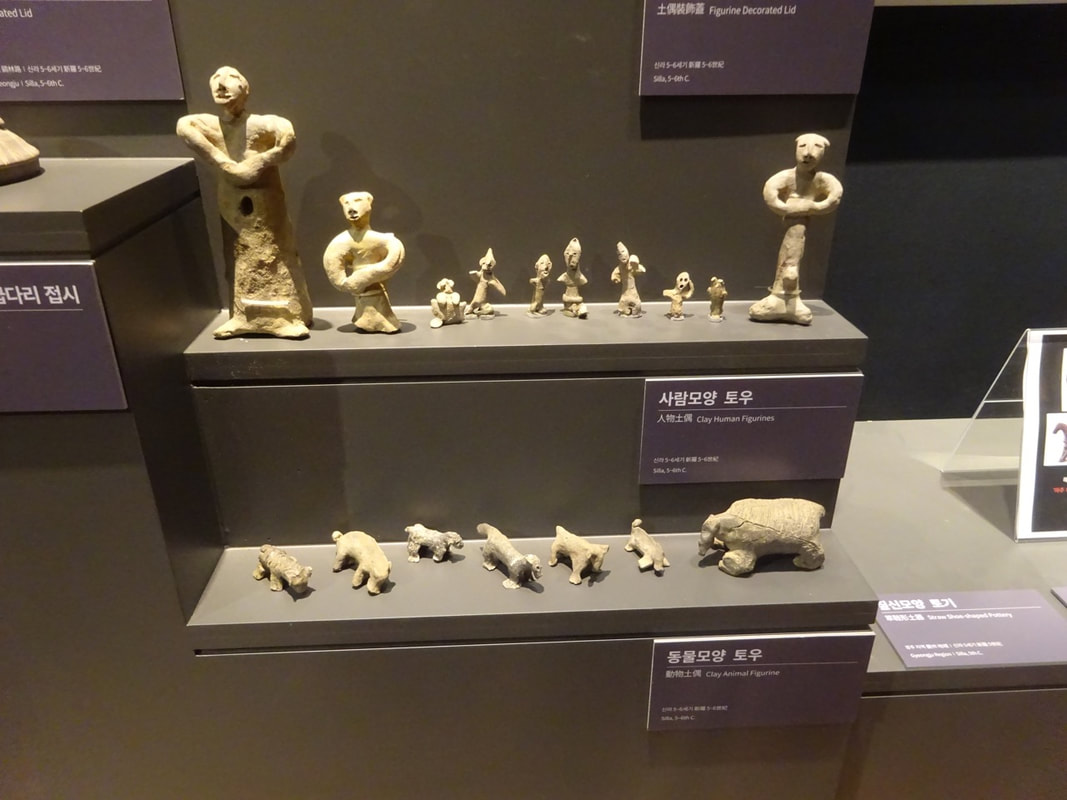
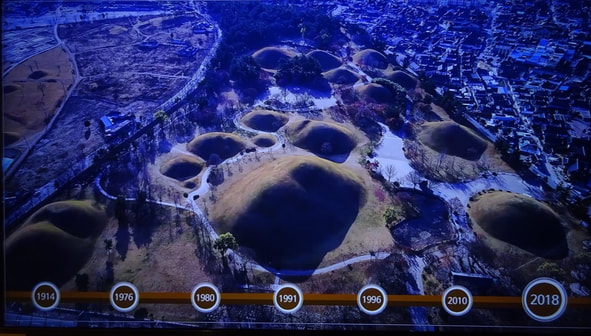
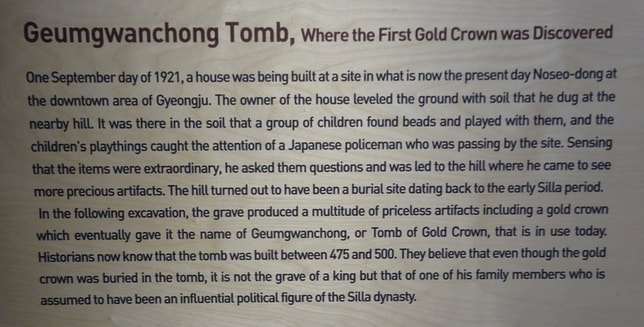
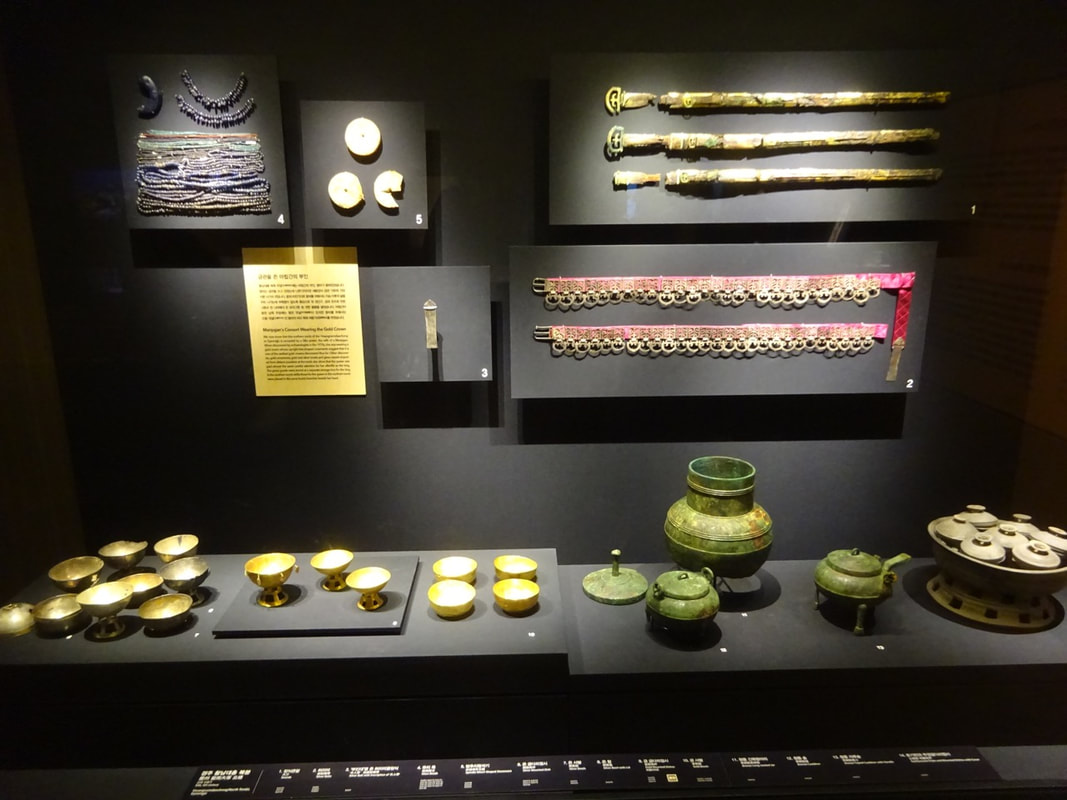
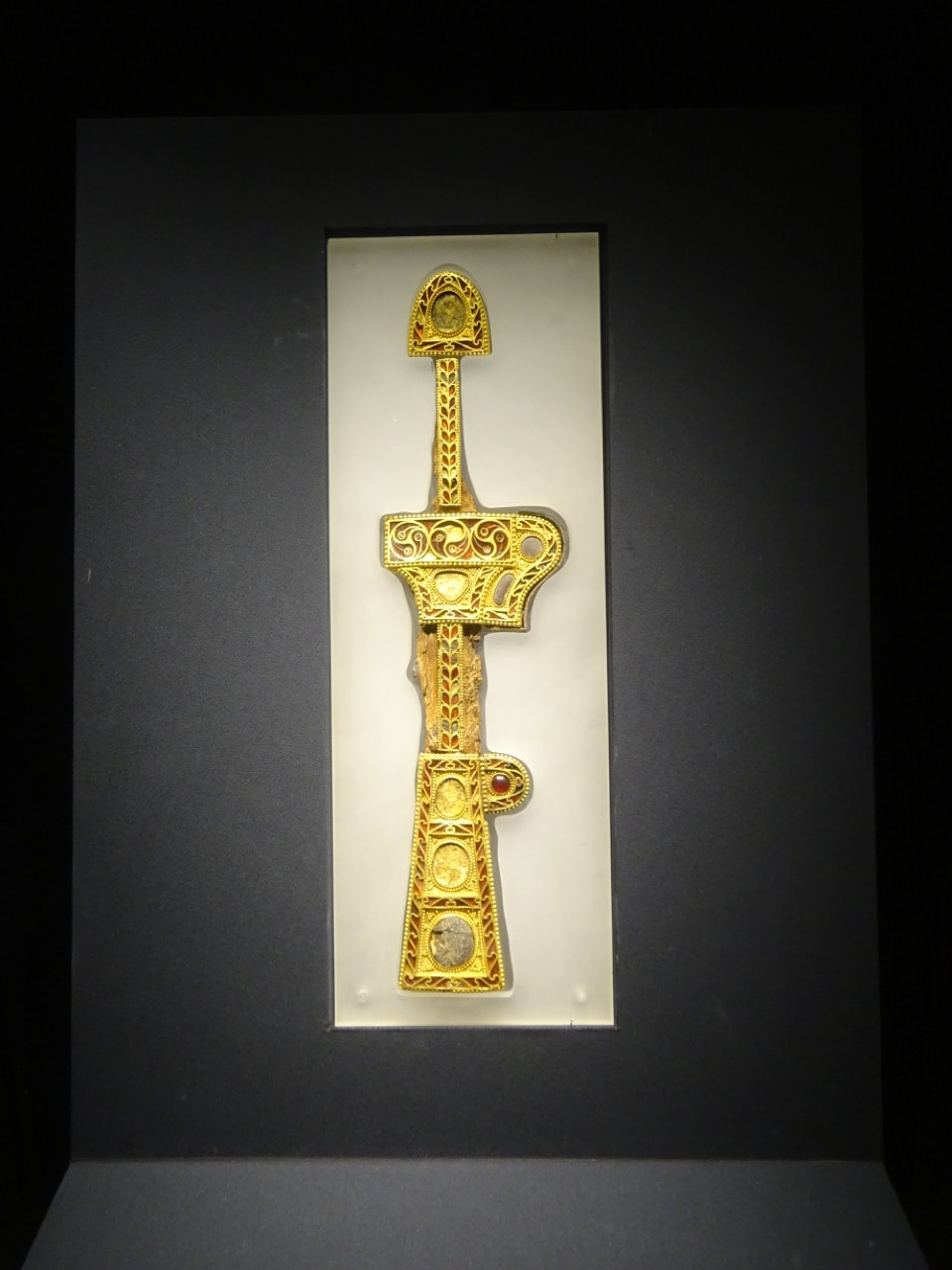
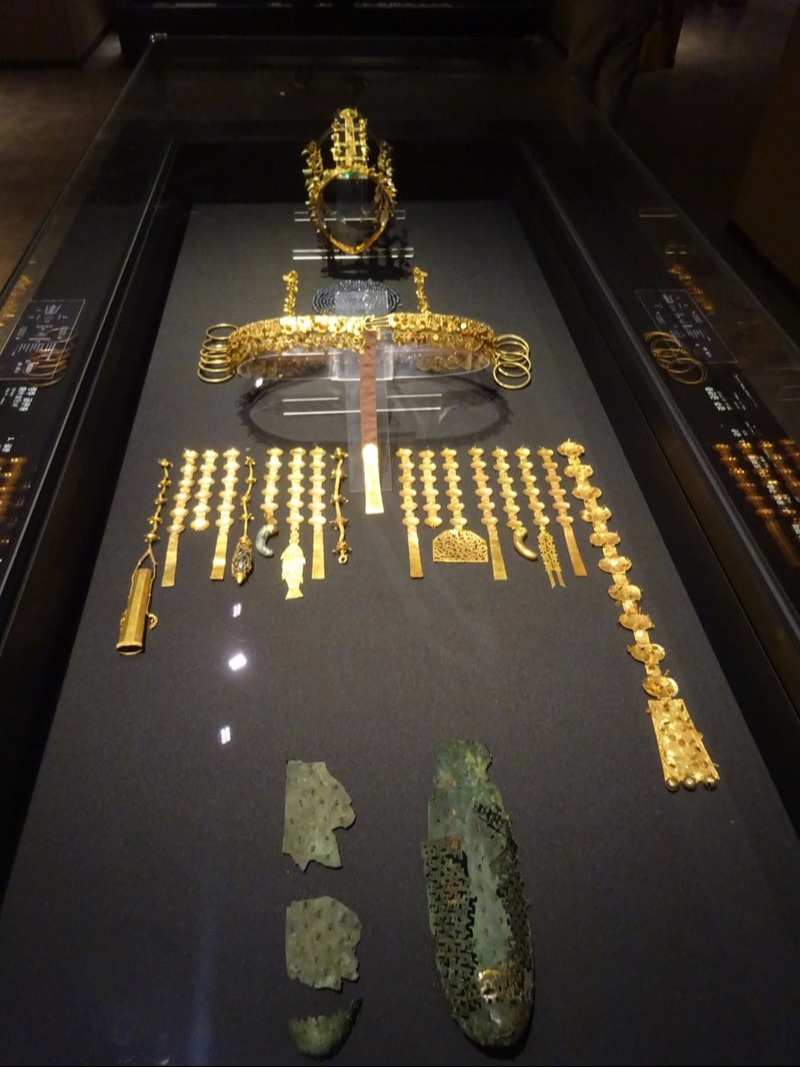
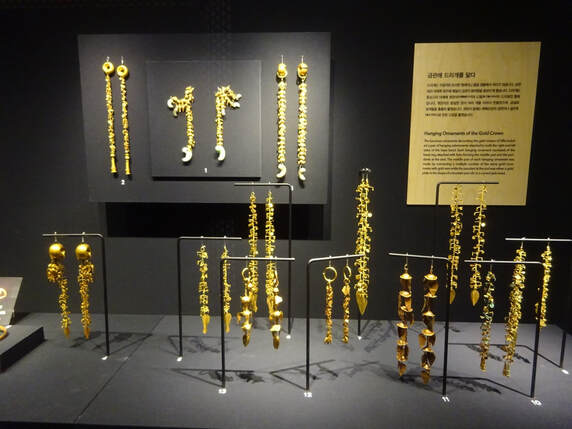

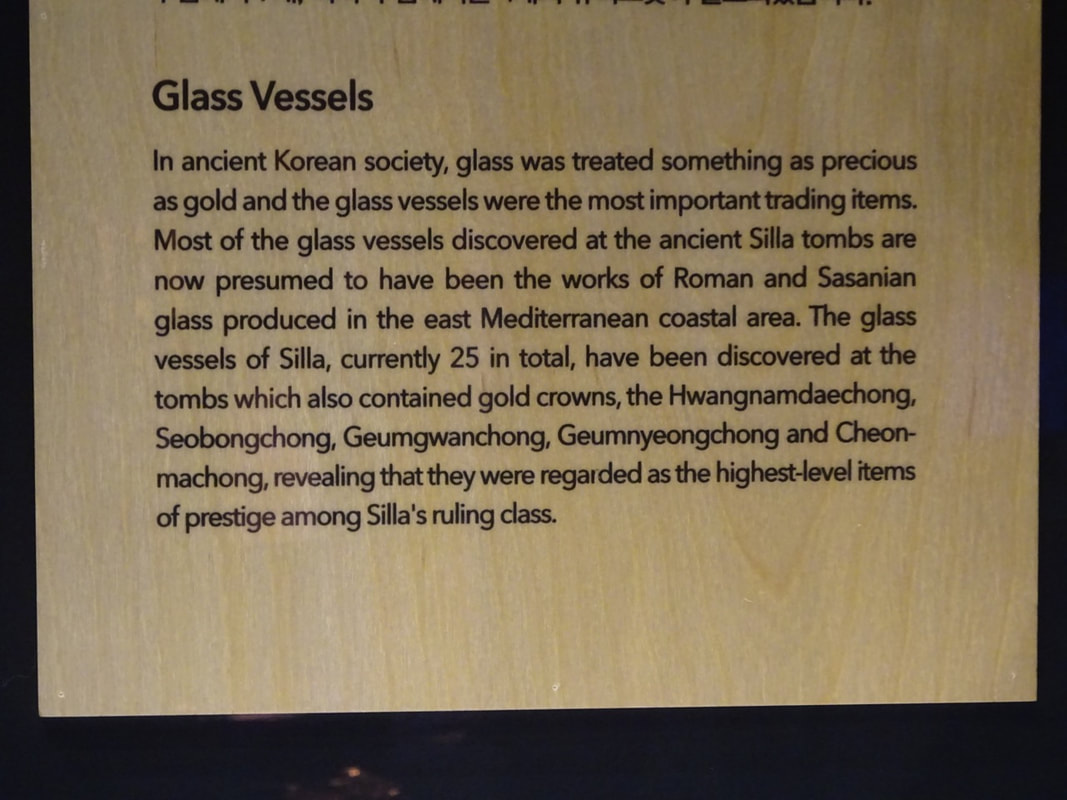
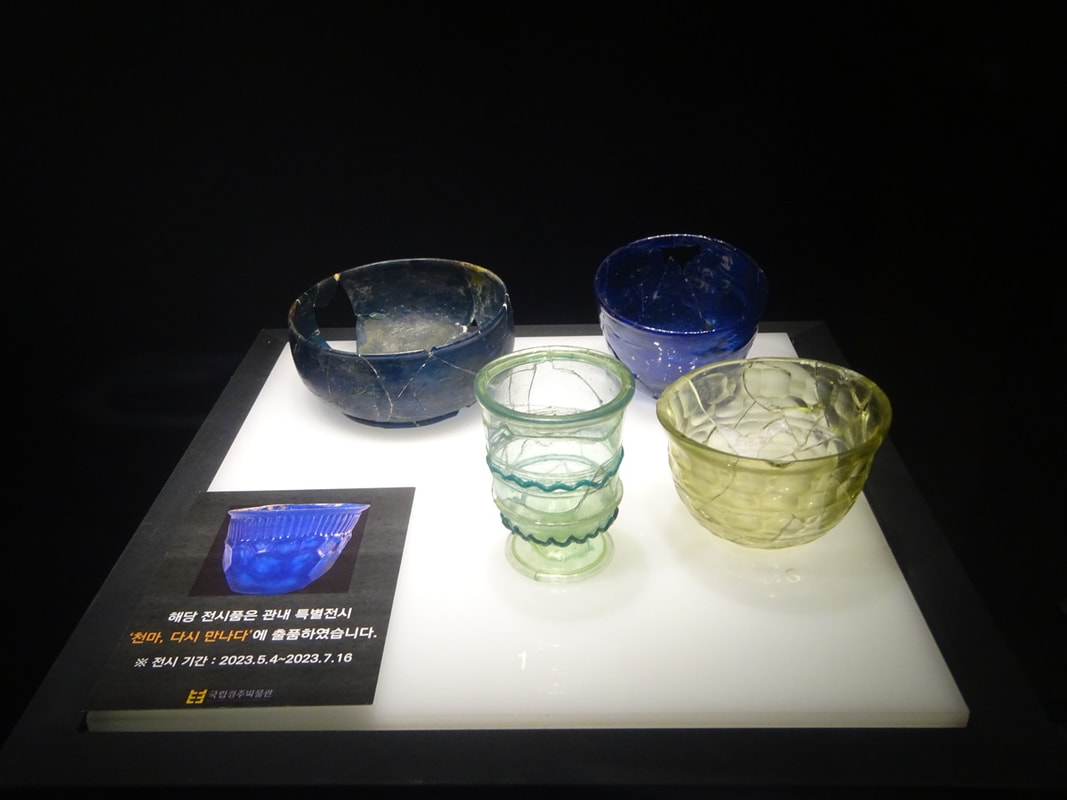

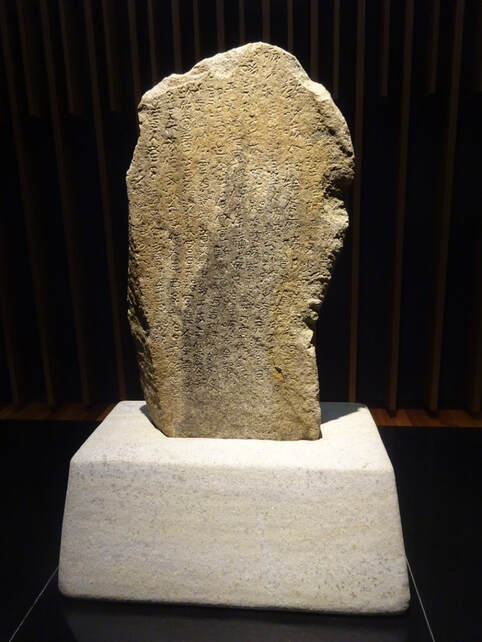
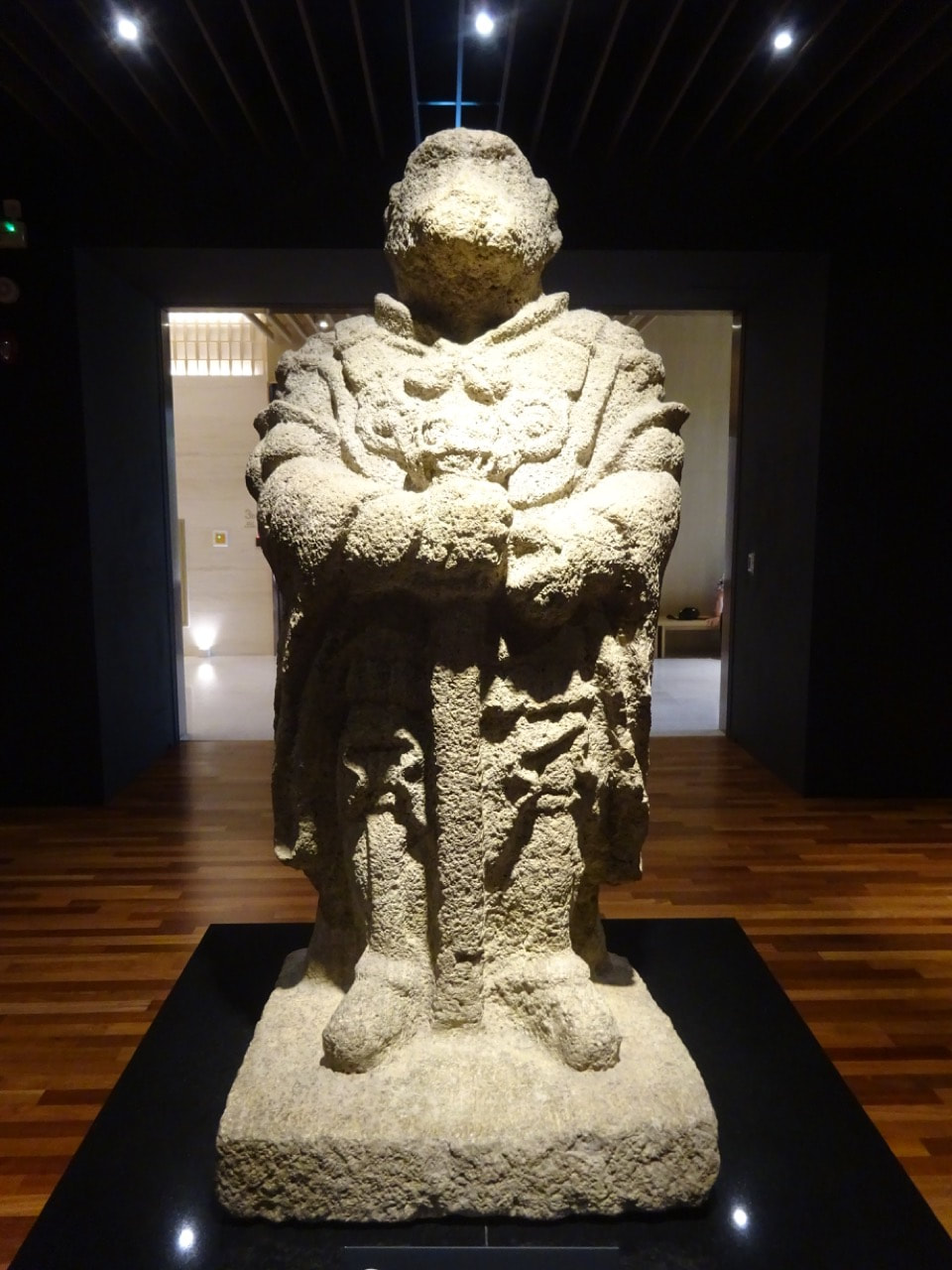
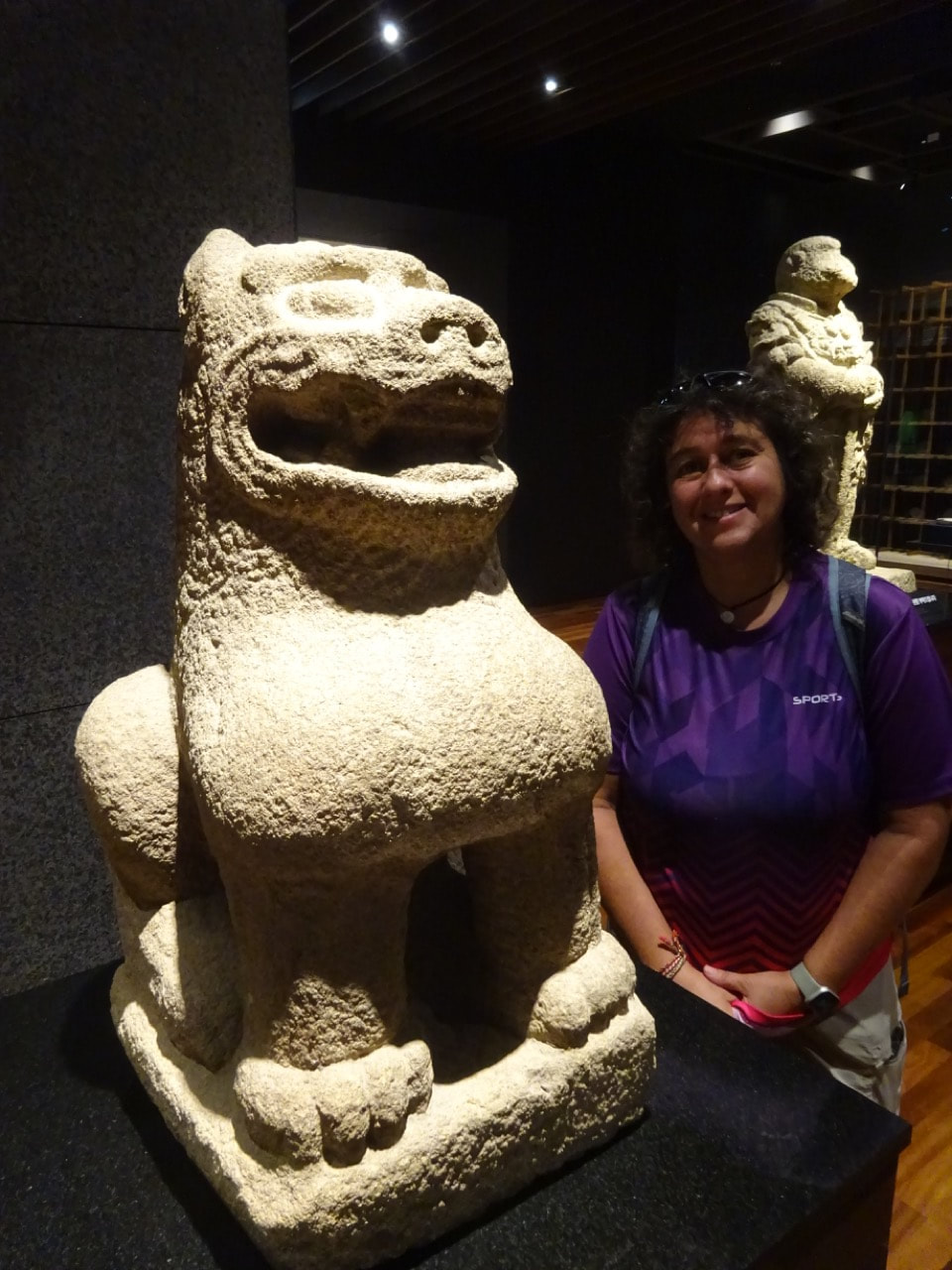
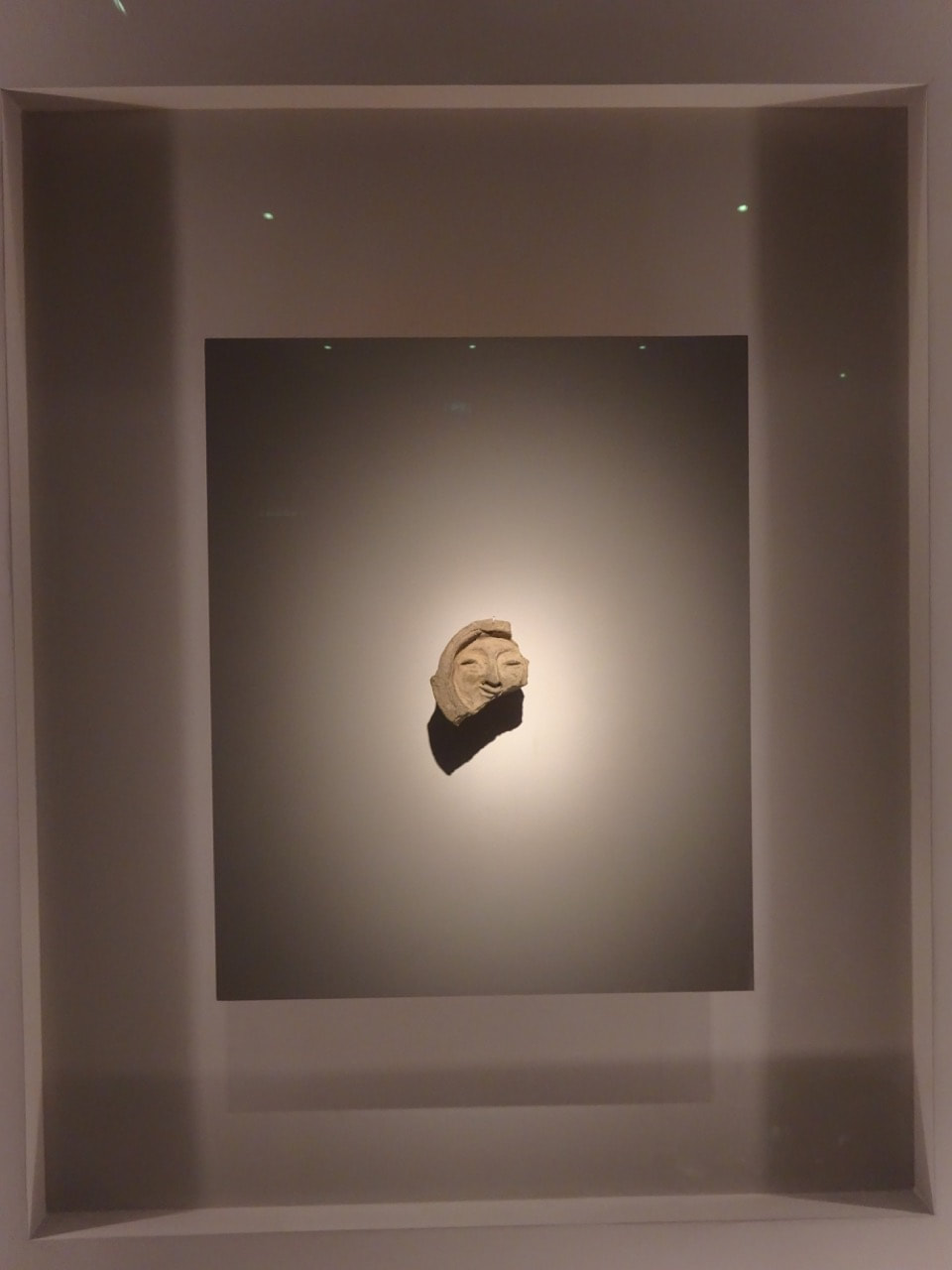
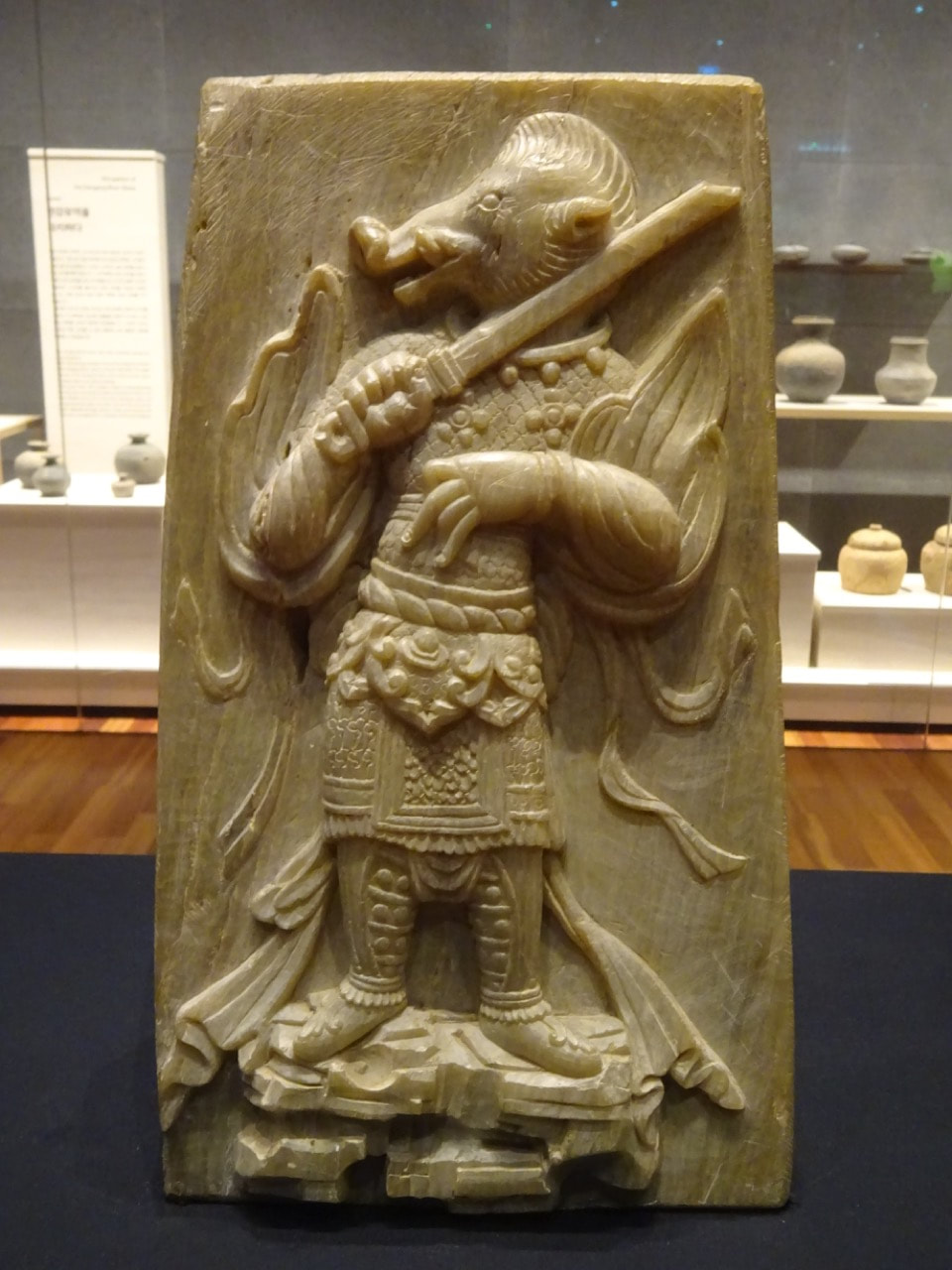
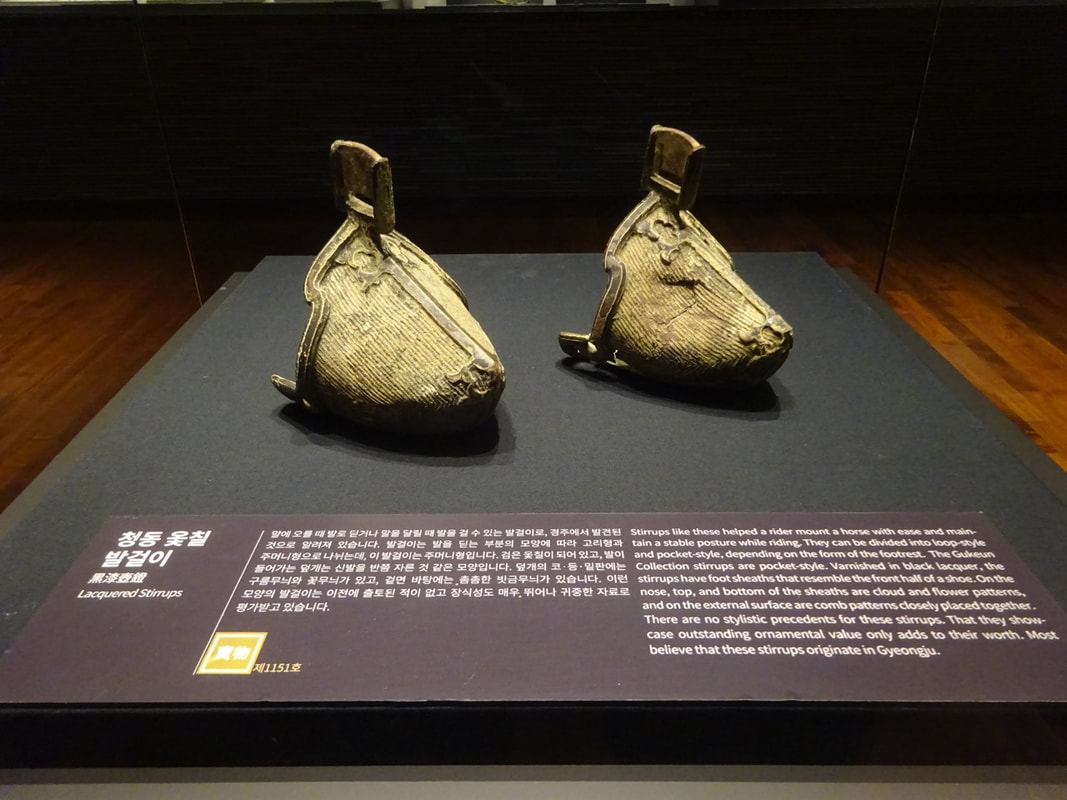

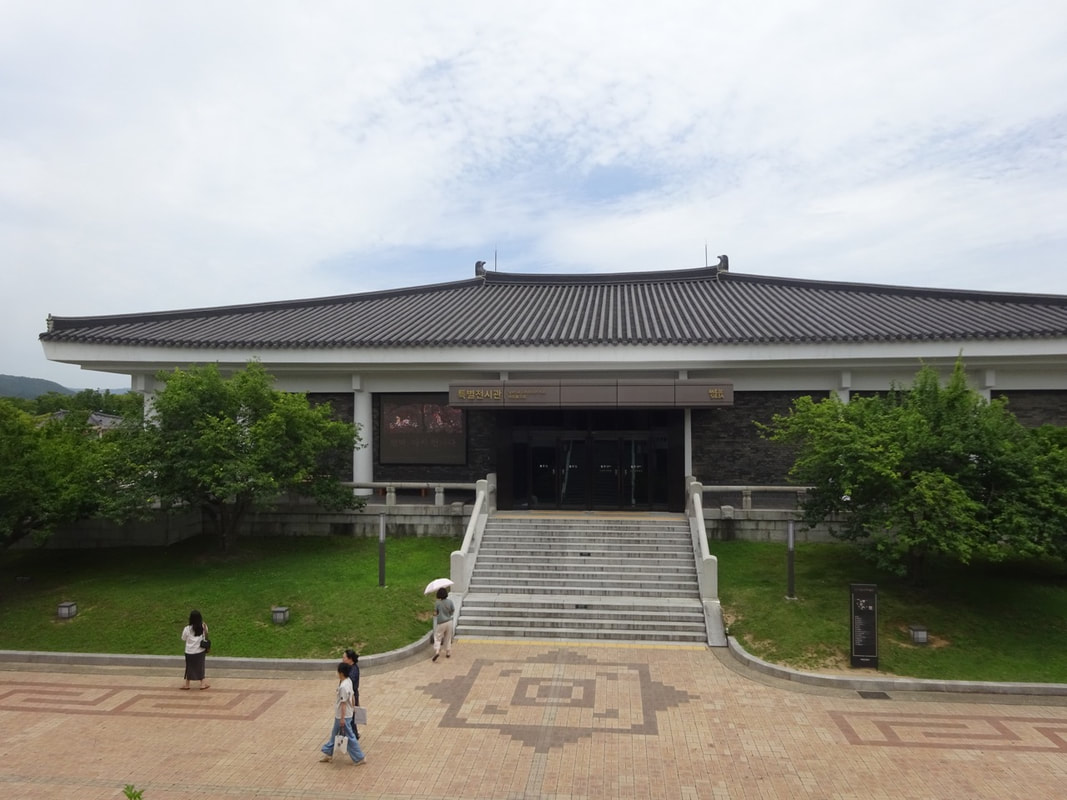
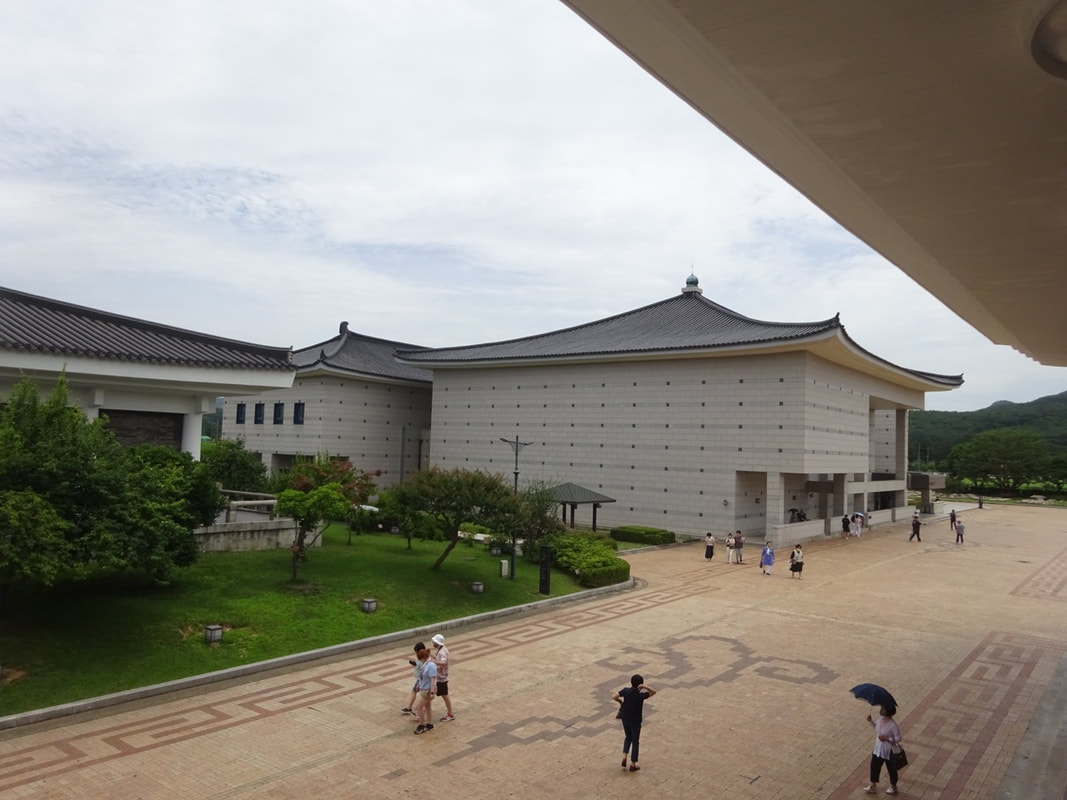
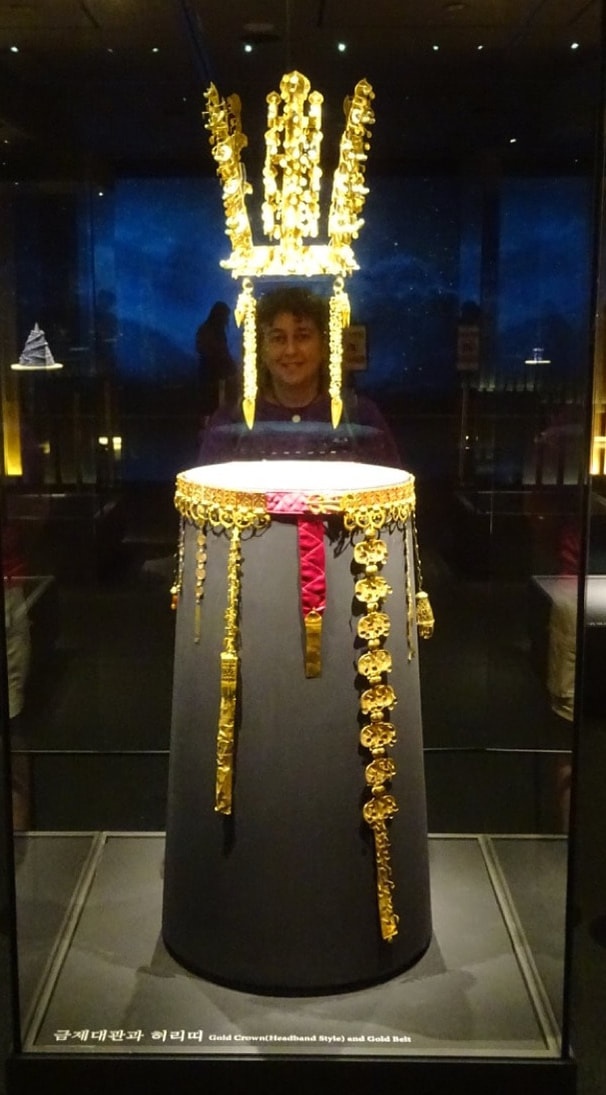
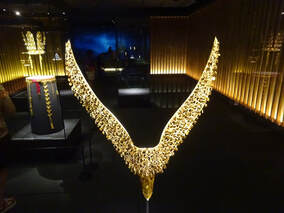
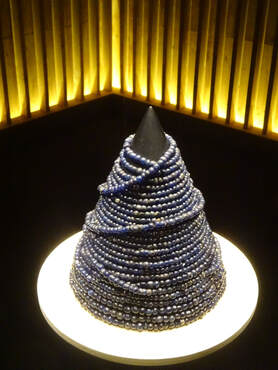
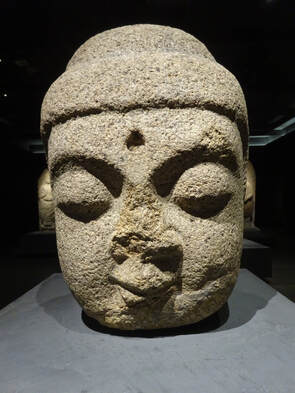
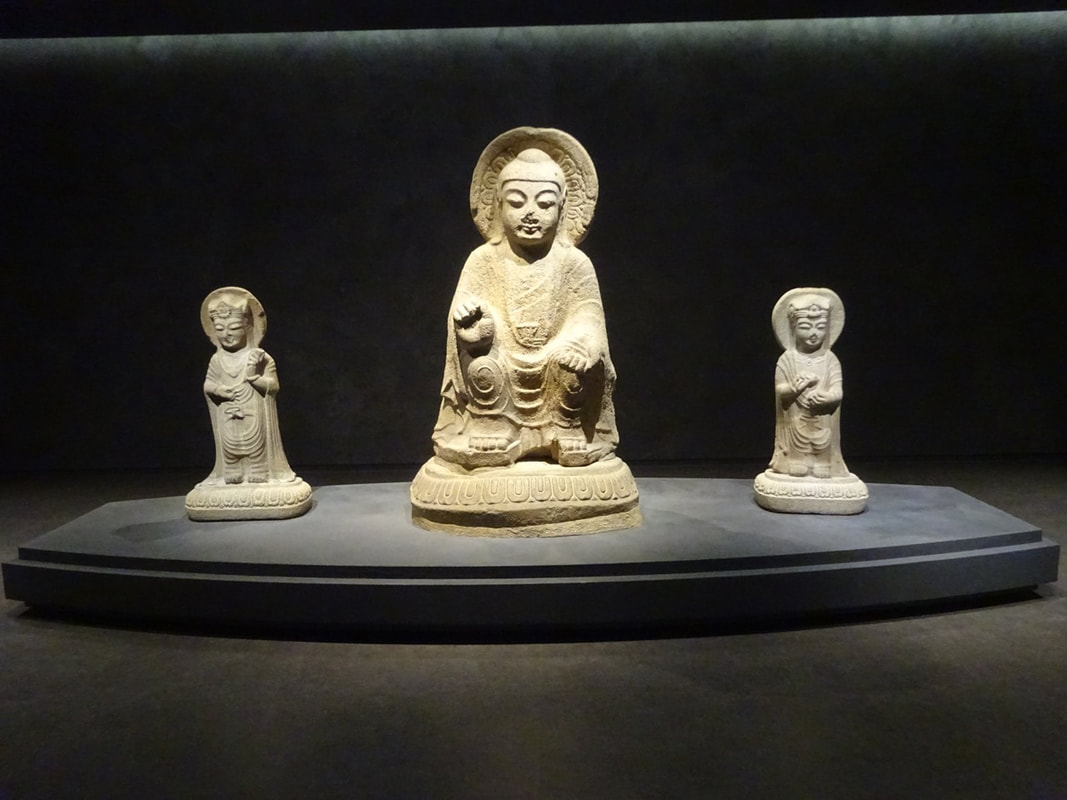
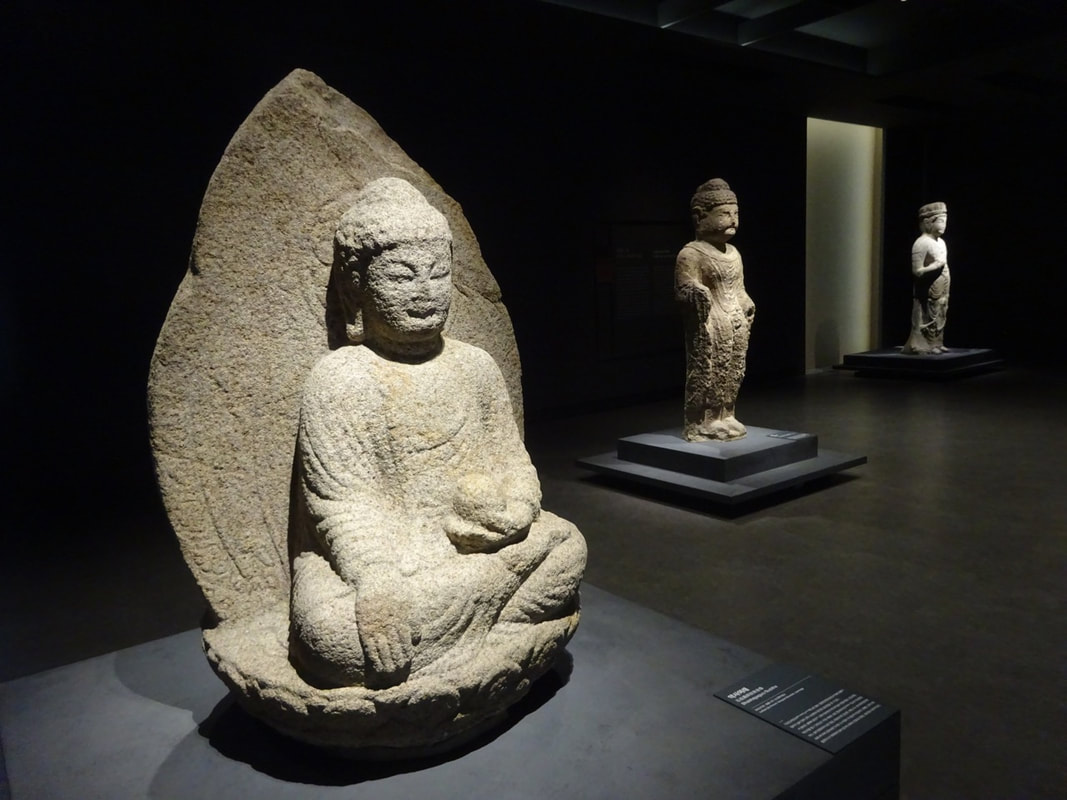
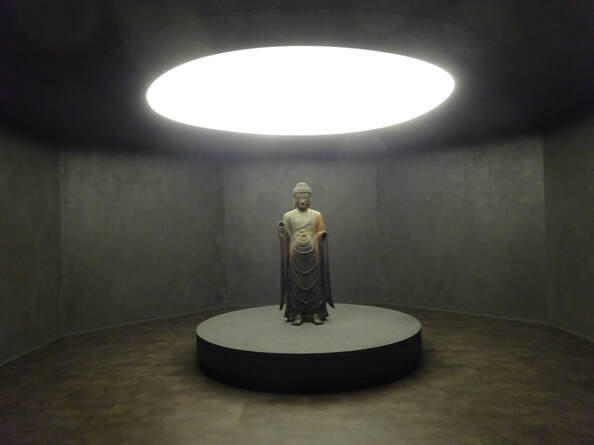
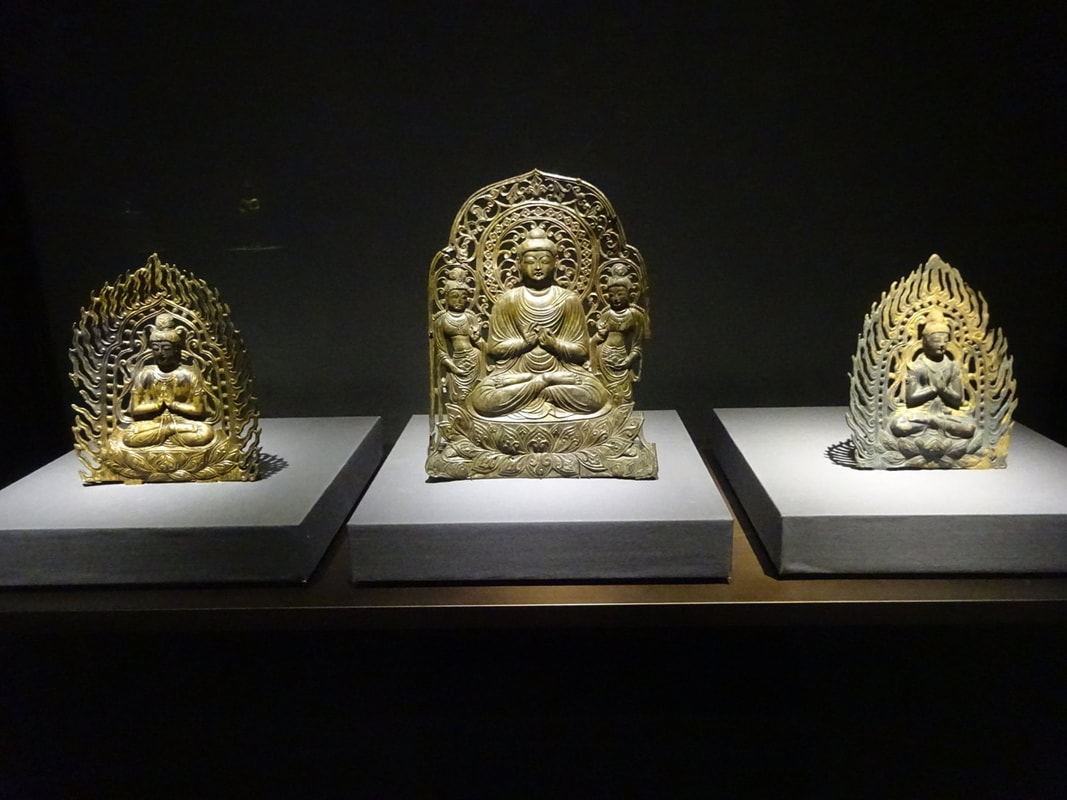
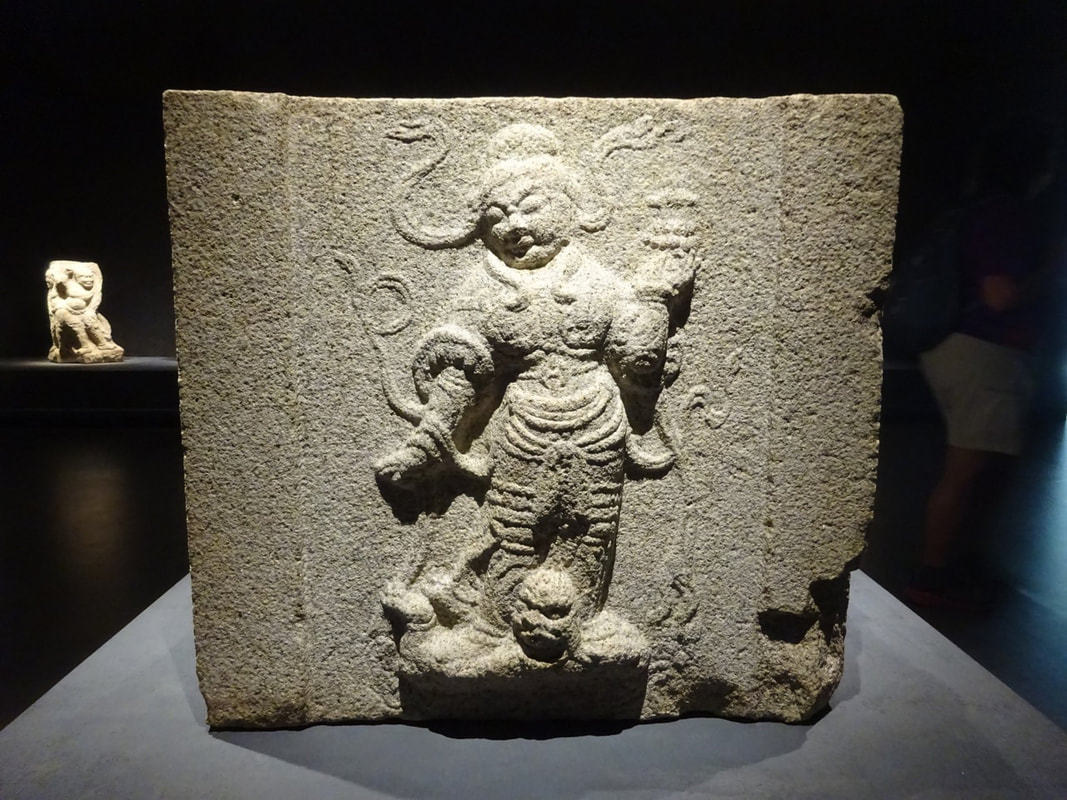
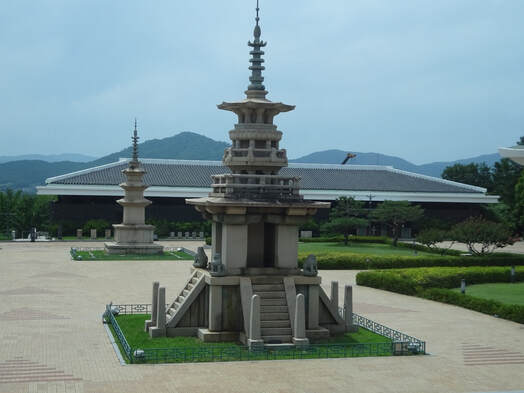

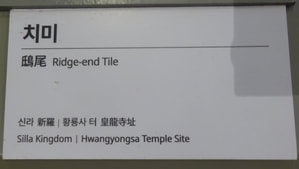
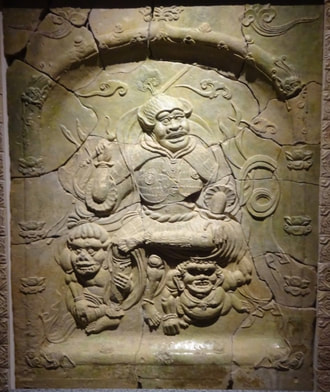
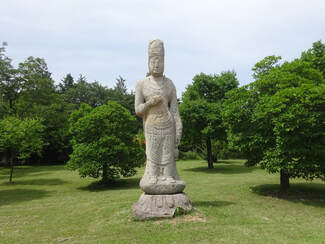




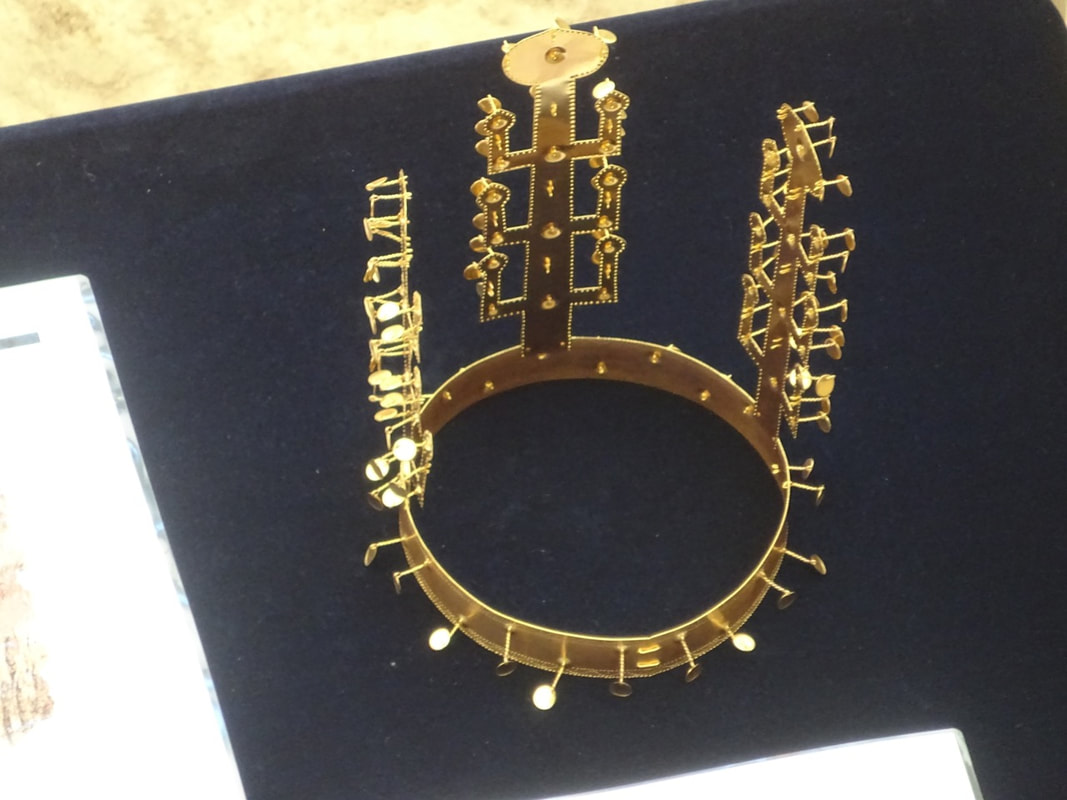
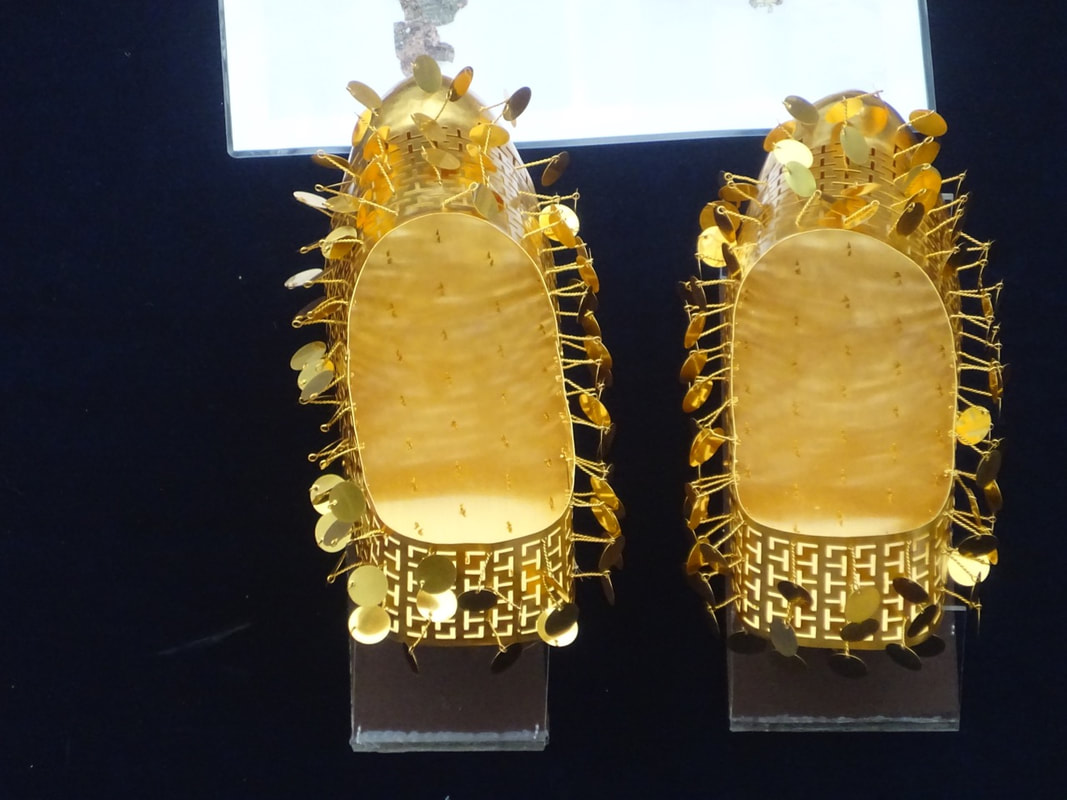
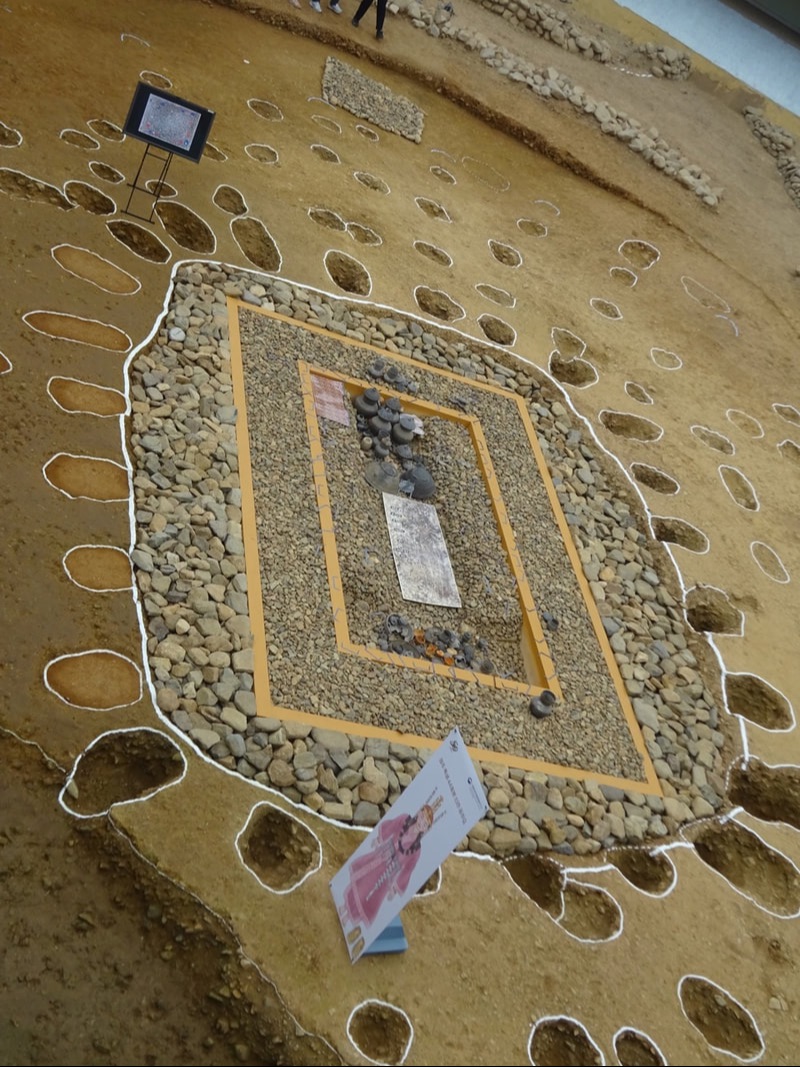
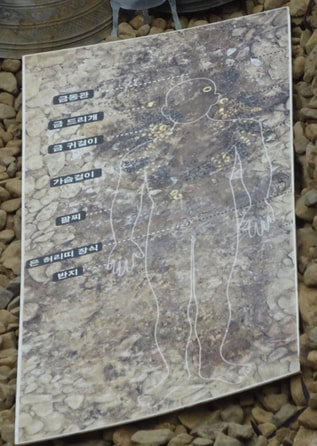
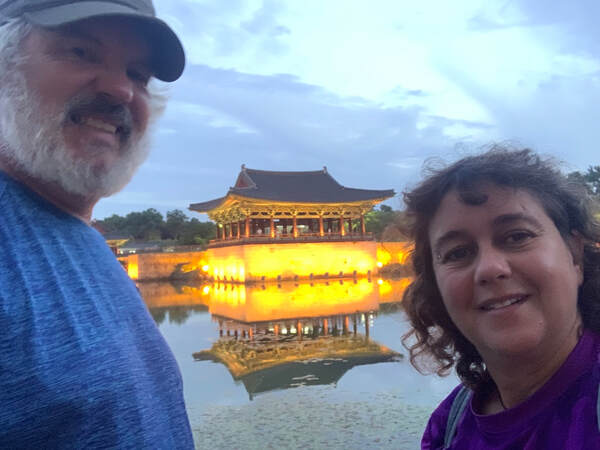

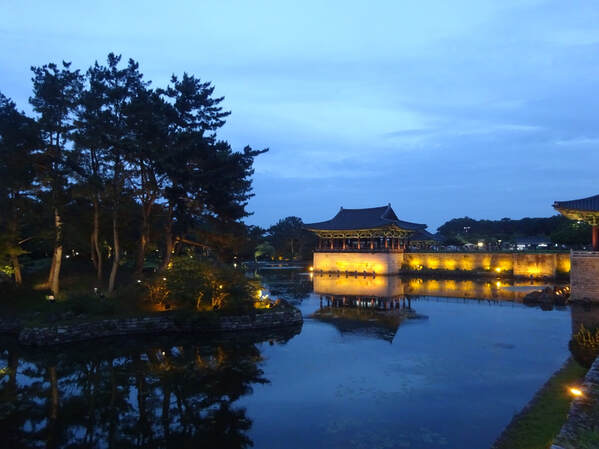
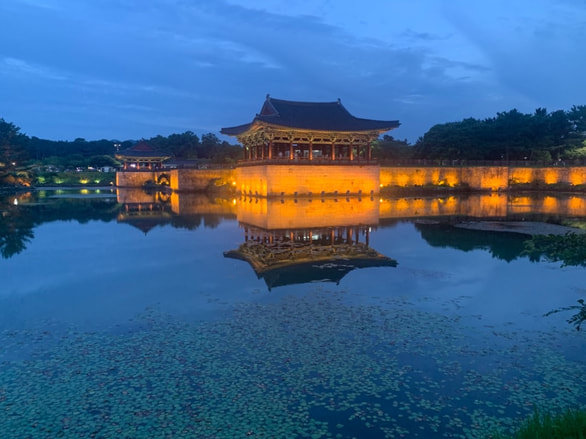
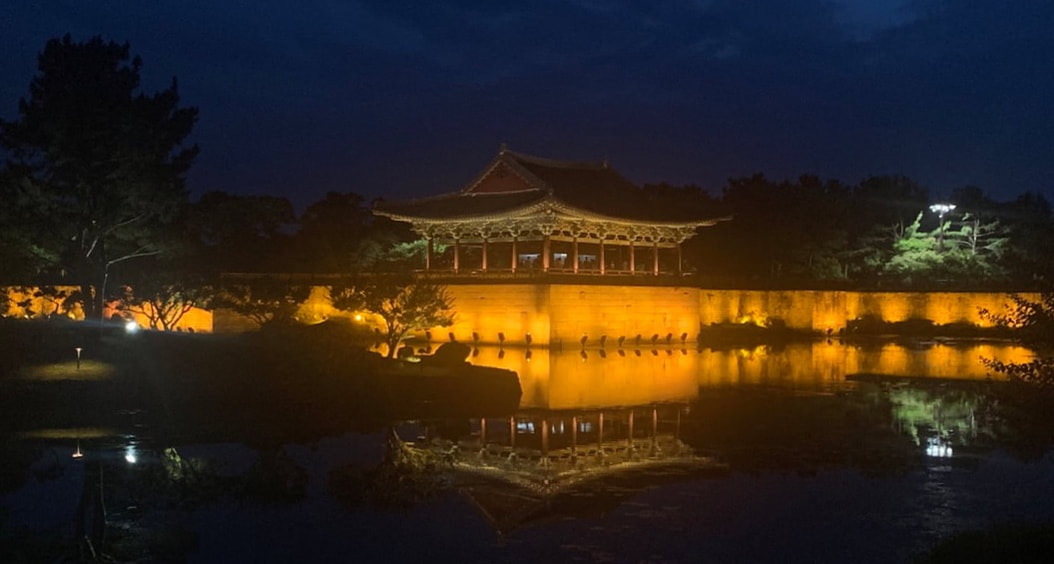

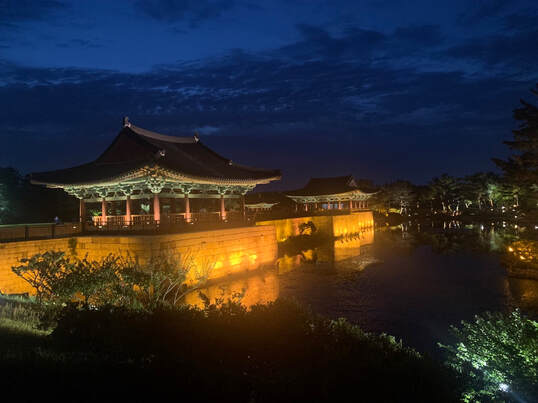
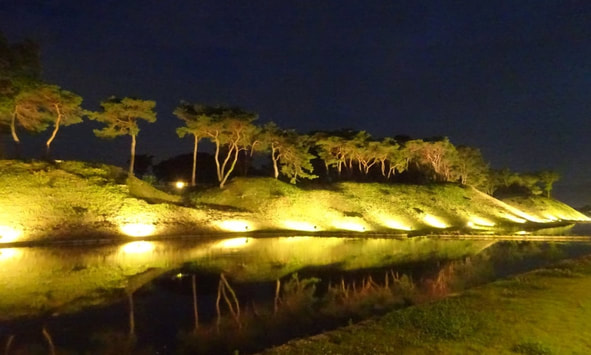


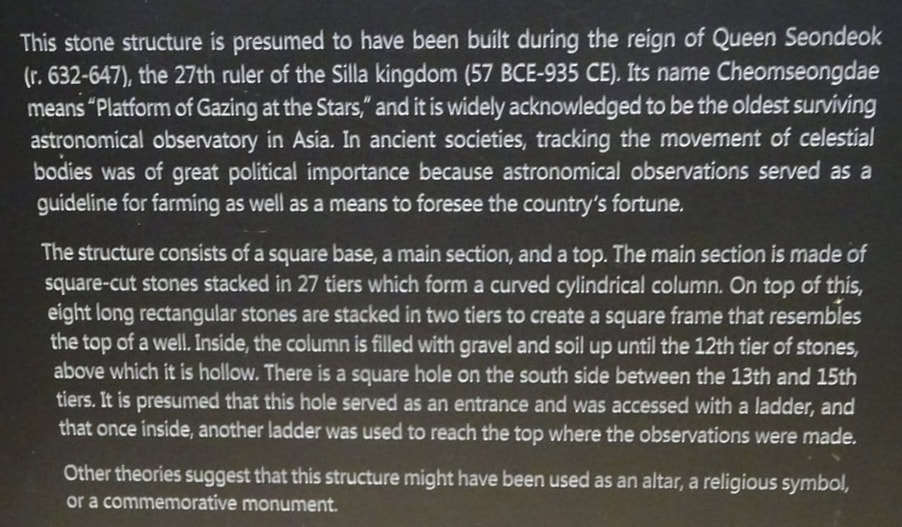
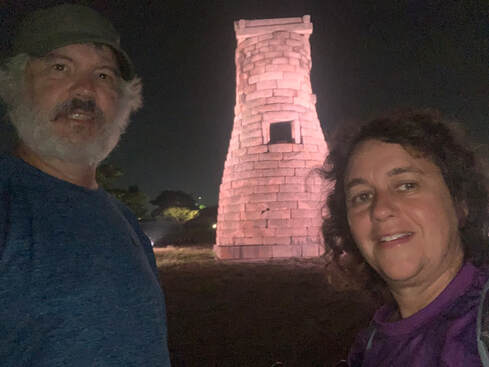
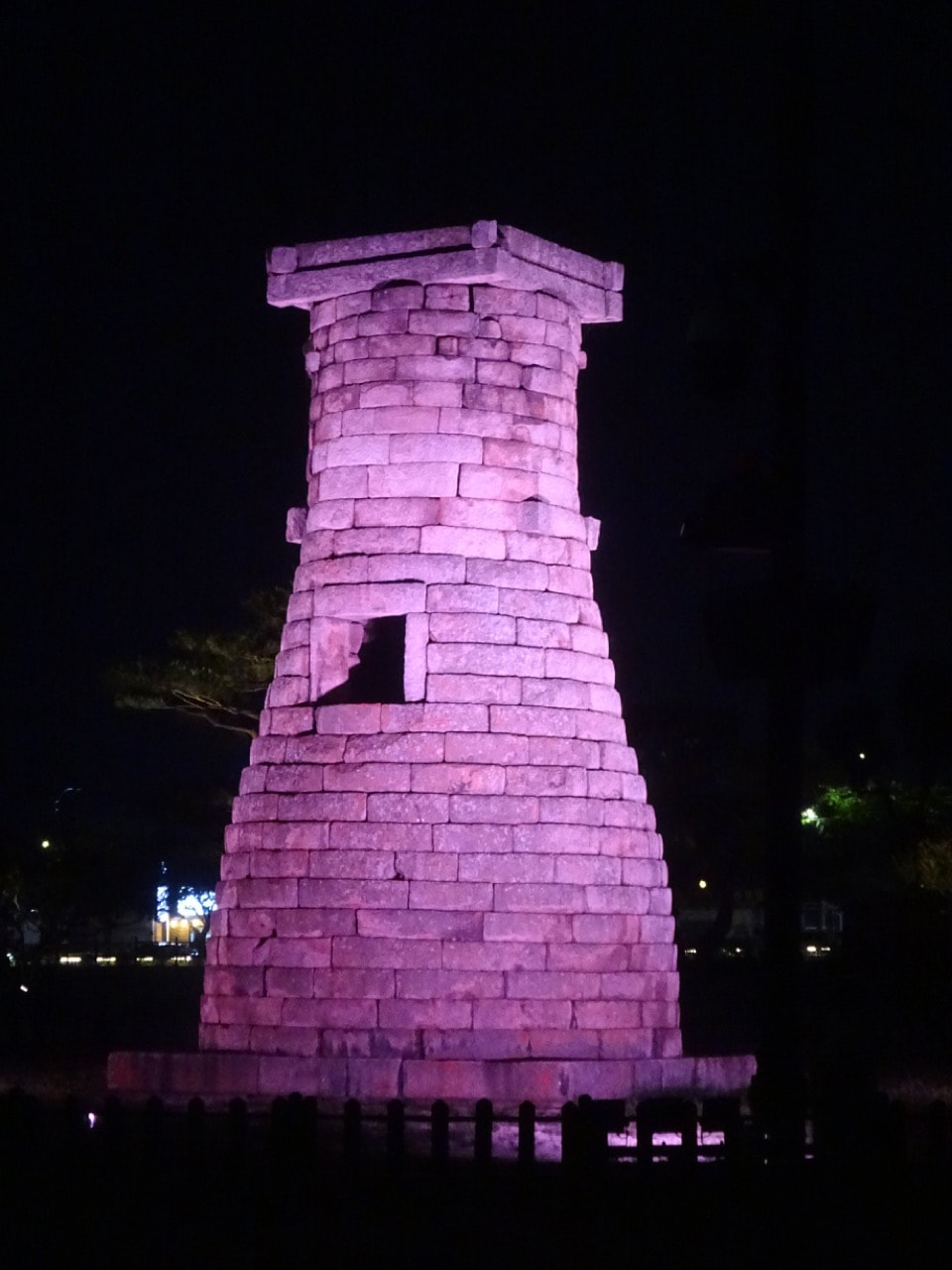
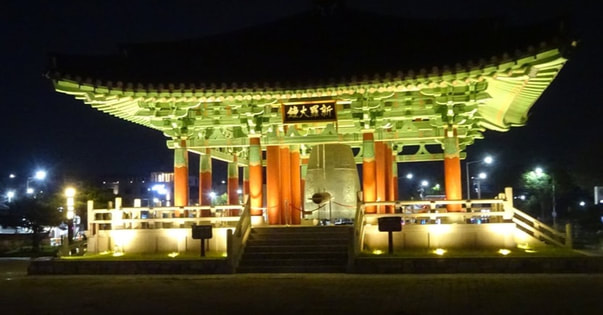
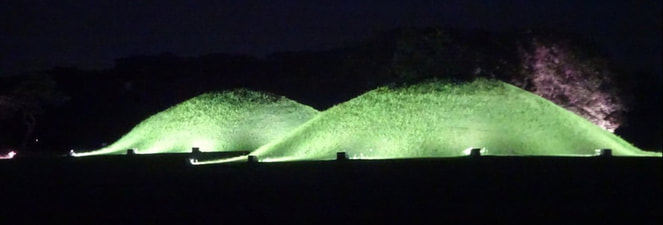

 RSS Feed
RSS Feed
